We and selected third parties use cookies or similar technologies for technical purposes and, with your consent, for other purposes. You can consent to the use of such technologies by using the “Accept” button, by closing this notice, by scrolling this page, by interacting with any link or button outside of this notice or by continuing to browse otherwise.
2018 CBCAP STATE SUMMARY OF EXEMPLARY PRACTICES
Building Effective Collaboration
The Community-Based Child Abuse Prevention (CBCAP) program provides federal funding to all 50 States, Washington D.C. and Puerto Rico. The funds are for the implementation of community-based and prevention-focused programs and activities designed to strengthen and support families to prevent child abuse and neglect.
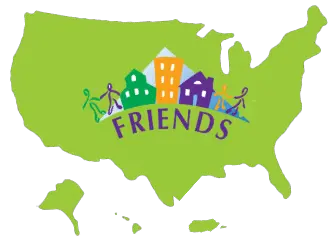
This summary highlights child abuse prevention activities and services implemented during the 2018 funding year for CBCAP State Lead Agencies. To learn more about the Child Abuse Prevention and Treatment Act (CAPTA) that guides the program click here to download the legislation.
The information shared below provides both a snapshot of services implemented throughout the country and specific state examples of work on community-based comprehensive approaches, successful outcome evaluations, and inspiring success stories.

Community-Based Comprehensive Approaches
Eight states share how they are working to build community-based child abuse prevention initiatives that are engaging multiple partners in collaboration and going beyond programs to wrap services around families.
Arkansas

One of the strategies the AR CTF has focused on during this year is to build services for families into existing systems or infrastructures versus funding individual projects. They believe an investment in existing systems will help to create longer-term sustainability. The Baby & Me project is a good example of this strategy.
The AR CTF brought together multiple state agencies to develop the program and created a multi-agency advisory board to oversee the project. The Director of Child and Adolescent Health, the Statewide Coordinator for the WIC program, and the Southeast Regional Coordinator – all from the Arkansas Department of Health, worked with the AR CTF director to conceptualize the program. The Department of Family and Preventive Medicine – Research and Evaluation Division (RED) from the University of Arkansas for Medical Sciences (UAMS) to help with a curriculum and an evaluation design. And, partners from the University of Arkansas at Little Rock – MidSOUTH training Academy to assist with developing implementation plans and expansion into three additional areas of the state. All these partners now comprise the Baby & Me Advisory Board which meets weekly to monitor the success of the program.
The Baby & Me project is designed to provide parenting education and support to women in Woman Infants and Children (WIC) clinics across the state. The program is built upon the existing infrastructure of the WIC clinics – a place where families already frequently visit and that are available in every county. areas. The Baby & Me program was developed partly in response to the lack of newborn home visiting services.
Parent Support Mentors are housed full time at the WIC clinics and enroll moms into the program during their last trimester of the pregnancy. Women are recruited when they come to the clinic to renew their WIC nutritional benefits each month. Parent Mentors are providing one-on-one monthly sessions with mothers beginning prenatally and through the first six months of the baby’s life. Each session includes a brief educational lesson and a check of developmental milestones followed by activities to promote parent/child interaction. For each module the mother completes, she is given a package of diapers and wipes as an incentive. Parents are also connected to community services and supports as needed.
The curriculum and script for the program developed by the Department of Family and Preventative Medicine at the University of Arkansas for Medical Sciences were based on the leading causes of infant death and injury in our state. In addition, the parent/child activities at the end of each lesson are meant to promote a nurturing and attachment between parent and child.
There are seven modules and include the following topics:
- Safe Sleep
- Dealing with Infant Crying
- The Importance of Routines
- Stress and Depression
- Home Safety (water safety, poisons, burns, falls, choking, guns)
- Preparing for Discipline
- Understanding Developmental Milestones (social-emotional, language, cognitive, movement)
The program is currently in six WIC clinics in the Delta region of the state, which is the poorest part of the state with the fewest resources. The Delta region of Arkansas is sparsely populated and has some of the highest poverty rates. Each of the six counties has a population of under 20,000 people and three of the six counties have a majority African American population. The overall child poverty rate in the region is 37%. More than half of the children (51.6 percent) received supplemental nutrition assistance and 36% are eligible for Medicaid. In addition, 42.9 percent of children in the Delta are overweight or obese and there were 8.1 deaths per 1,000 live births compared to the national average of 6.8 deaths. By all measures, the Delta region is at a significant disadvantage and is an underserved area of the state.
Furthermore, by offering services at the various WIC clinics in the Delta, we are reaching most of the pregnant and parenting women that live in the area. With the WIC eligibility criteria being an income of 185% of the federal poverty level, we are reaching both low- and- moderate-income families.
The plan is to expand to three additional WIC clinics in the upcoming year in more urban-like areas of the state. And to expand the programming to include weekly support groups being offered to mothers or fathers that would like extra support. We will be using a program called Mentoring Youth Through Empowerment (MYTE). MYTE is an eight-session intervention the helps caregivers understand the impact of trauma, learn trauma-sensitive parenting, and learn how to create a safe and more nurturing home environment. The lessons are not meant to be sequential, so parents can enter the sequence at any time. Another consideration is to offer the MYTE program as a continuation of services to parents after they have completed the seven Baby & Me modules.
The reality is we will probably never have enough resources to provide home visiting services to every part of our state. With the Baby and Me program, we are testing the concept of providing similar educational services to all parents.
California

Two comprehensive approaches using CBCAP funding are described below. These include Innovative Partnerships, a series of five individual grants, each of which seeks to increase collaboration between county child abuse prevention councils and child welfare or with other Child Abuse Prevention Councils (CAPCs) and Community in Unity, a series of five individual grants, that focus on ground-level collective impact projects.
Innovative Partnerships
The Innovative Partnerships grants provide funding for statewide regional collaborative networks between county CAPCs and community stakeholders. The intent of the project is to improve child abuse prevention outcomes by strengthening families through increased availability of meaningful resources. These grants encourage coordination by supporting CAPC coalitions across the state to develop regional collaborative networks with community stakeholders to improve child abuse prevention outcomes.
The OCAP first funded the Innovative Partnerships grant for three years between Fiscal Year (FY) 2016-2019 decided to re-release the Innovative Partnerships grant for competitive bid to fund projects in FY 2019-20 and 2020-21. Five of the original grantees were selected for award: the Child Abuse Prevention Center of Sacramento, Court Appointed Special Advocates for Children (CASA) of Mendocino and Lake Counties, Contra Costa Child Abuse Prevention Council, Fresno Council on Child Abuse Prevention and Center for Family Strengthening.
In FY 2019-20 and 2020-21, all the funded agencies will build upon the work they did in the previous grant term:
- The Fresno Council on Child Abuse Prevention will be the lead agency for the Central Valley Regional Child Abuse Prevention Council to provide coordinated efforts to address gaps in the prevention field, provide education about substance exposure and other major risk factors within the region.
- The Contra Costa Child Abuse Prevention Council (CAPC) will provide management of the Greater Bay Area Child Abuse Prevention Council Coalition with the goal of mitigating the major risk factors for child maltreatment and build protective factors.
- The Child Abuse Prevention Center of Sacramento will lead the Sierra-Sacramento Region Child Abuse Prevention Coalition to provide coordinated efforts to address poverty and substance abuse in the region, while building Protective Factors to reduce risk factors of child abuse and neglect.
- CASA of Mendocino and Lake Counties will lead the North Coast Regional Child Abuse Prevention Council to expand capacity in each county, promote community resources and engage community members.
- Finally, the Center for Family Strengthening will be the lead agency for the Coastal Tri-Counties Regional Child Abuse Prevention Council for the development of a regional approach to prevent child maltreatment. Based on localized research and data mapping, the grantee will implement local prevention plans and develop a regional sustainability plan for addressing and preventing child maltreatment.
The OCAP chose to award the above-highlighted organizations with an additional grant term because of the success they showed during their previous Innovative Partnerships grant term. Activities completed during the FY 2018-2019 year of the previous grant term by Innovative Partnerships grantees are described below:
Greater Bay Area
The Greater Bay Area Coalition, led by Contra Costa CAPC for the purpose of this grant, has been working together successfully for approximately 20 years. The activities in this grant have been used to re-energize these existing partnerships, establish new partnerships, and to develop and improve the materials distributed to families and professionals. During the 2018-19 fiscal year, they began planning to bring in CAPCs from beyond our region through a statewide convening to be held in October of 2019 in Solano County. They have also started opening Coalition meetings to additional stakeholders to encourage new collaborations and partnerships.
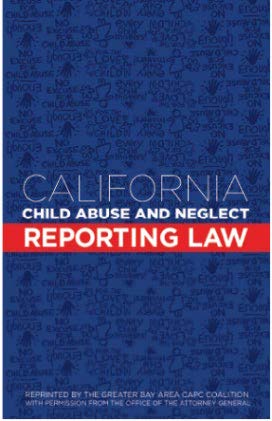
Sacramento-Sierra Regional Partnership
The Sacramento-Sierra Regional Partnership, led by the CAPC of Sacramento, is comprised of 13 counties. They have created the Opioid Tool Kit, containing resources to educate family service organizations about the current opioid epidemic and ways to better serve families involved. The coalition believes that by mitigating factors such as drug use, it will in turn help mitigate cases of abuse and neglect in their region. The tool kit is aimed at parents of children ages prenatal to five. The Sacramento-Sierra Regional Partnership has also provided training about Adverse Childhood Experiences (ACEs) and Trauma-Informed Care. Amador, Placer, Sacramento, and Yolo Counties have agreed to test the tool kit with one agency per county and document successes and areas for improvement after implementing the tool kit. In FY 2018-19 all toolkit materials were completed and launched on May 1, 2019. A survey was also made available for pilot agencies to provide feedback regarding the toolkit for improvements to be made. To pilot the toolkit, each County would engage 2 partners to implement it, then follow-up with survey participation.
Also, as part of a partnership with the Kids Plates California Grant, eight Innovative Partnership Counties received bicycle helmets to distribute to low income families in their communities, seven Innovative Partnership Counties received up to 3 different sizes of life jackets to distribute to low income families and all program counties were offered convertible car seats and/or children’s booster seats to distribute to their low income at-need families. This led to raising awareness of the importance of car seat safety knowledge and the distribution of local area Car Seat Technician Certification Trainings that would be taking place in several Counties throughout California in the 2019.
CAPC Sacramento, in partnership with OCAP, successfully co-hosted year two of Kids-Day at the Capitol on April 11, 2019. As a result of attendance at the Child Abuse Prevention Summit, in San Diego, the Sacramento County Prevention Cabinet was formed, of which CAPC Sacramento is a founding member.
Coastal Tri-Counties Child Abuse Prevention Coalition
The Coastal Tri-Counties Coalition is a partnership between Santa Barbara, San Luis Obispo and Ventura counties. The coalition finds effective ways to engage parents in the community and expand opportunities for parent leadership within their counties. The Coastal Tri-Counties CAP Coalition is working with Strategies 2.0 to design an innovative Five Protective Factors training for parent leaders based on a Parent Café framework. Identified parent leaders will learn how to educate neighbors, friends, and family members on the Five Protective Factors and help promote family strengthening and child abuse prevention messages.
The coalition made the goal to reach out to minorities, single mothers, single fathers, and at risk homeless and other unrepresented groups by providing The Five Protective Factors Cafecitos’ presentations in Ventura, Santa Barbara and San Luis Obispo County. The Family Strengthening Educators recruited participants in their own community to participate at their community Cafecitos’.
North Coast Child Abuse Prevention Council Coalition
The North Coast CAP Coalition includes Del Norte, Humboldt, Mendocino, and Lake counties. The coalition is focused on expanding each CAPC’s capacity and promotes available resources within each community within the region. Using social media and traditional media, the coalition engages members of various communities within the region and connects them to programs and services that will help reduce child abuse and neglect within the region.
In FY 2018-19, the coalition’s counties each developed strategic plans to address specific issues within their communities and created messaging to conduct public information prevention campaigns. The coalition also made a significant push to raise awareness during Child Abuse Prevention month in April through the following efforts: pinwheel challenges, Taco Bell placemat art contest, Radio PSAs, Family Life magazine ads, articles in school newsletters and websites, materials distrusted in various ways throughout the communities, proclamations, flag raising events and regional trainings about Trauma Informed Care.
Central California Coalition of CAPCs
The Central California Coalition of CAPCs includes CAPCs from Fresno, Kern, Kings, Madera, Mariposa, San Joaquin, Stanislaus, and Tulare counties.
In FY 2018-19, the coalition hosted another successful training in San Joaquin, Fresno and Kern for substance abuse and child maltreatment with a cumulative 698 attendees between the three trainings. The trainings were led by Lisa Frederiksen, who has personal experience with secondhand drinking (SHD), a concept she first introduced in 2009, and working to overcome its impact. She has spent more than a decade researching, writing, consulting and speaking on a range of SHD-related topics such as addiction, substance misuse, mental illness, co-occurring disorders and childhood trauma, her explanations for which are all anchored in current brain research.
Community in Unity
The Community in Unity grants provided funding for support and development of strategic, collective impact projects that address the major risk factors of abuse and neglect, specifically poverty and substance abuse.
The OCAP funded five collective impact Community in Unity grants. Each grant involved a different region of the state with its own goals, objectives, and performance measures. The purpose of the Community in Unity grants was to support collective impact projects specific to the needs of each of the grantees’ communities, with a focus on either substance abuse, poverty, and/or economic challenges, as these tend to be the highest risk factors of child abuse and neglect. For the purpose of this set of grants, collective impact was defined by the OCAP as being built upon five interconnected components that can produce strong alignment and lead to large-scale results. The five components included: a common agenda, shared measurement, mutually reinforcing activities, continuous communication, and backbone support. The Community in Unity grants officially concluded at the end of FY 2017-18 but were given the option of a third-year extension, which four of the original five grantees accepted. The Community in Unity grant program will officially conclude July 2019.
UpValley Family Centers of Napa County
UpValley Family Centers is a school-based family resource center in Calistoga that participated in the Calistoga Community Schools Initiative. Through collaborative action, this initiative aimed to reduce substance abuse among youth and parents in Calistoga with preventative approaches and connections to quality resources.
UpValley Family Center’s accomplishments during the three-year grant period from FY 2016-17 through 2018-19 include:
- Teen participants attended the 18th Annual Cesar Chavez Leadership Conference and Celebration at University of California, Davis.
- UpValley served 221 students with the Calistoga Community Schools initiative.
- UpValley had three staff trained in Triple P Teen and two staff trained in Stepping Stones.
- Adelante parent leader, Julie Garcia, was recognized by the OCAP with a Parent Leadership Award.
- In responding to the Tubbs Fire, UpValley connected 530 households to vital resources, emergency financial assistance and case management. They also opened a Calistoga Fire Recovery Center that continues to serve affected households as the community supports long-term recovery.
- Motivated and engaged parents to become involved in the community through the Adelante parent leadership group.
- Reduced substance abuse among youth and parents in Calistoga with preventative approaches and by providing connections to quality resources.
- Received over 20% of the district’s population in referrals for counseling services.
- Gained the Mayor’s support to partner with Parks and Recreation and the City Planner to install park renovations in the coming fiscal year.
- Successfully advocated for High School Equivalency Classes (GED) for residents beginning in the fall of 2019.
- Served over 700 individuals in Calistoga and St. Helena in 2019 through the Volunteer Income Tax Assistance program.
- Developed the “tech time” activity for youth to teach seniors to use new technology devices.
Colusa County Community Advocates for Parents and Children
The Colusa County Community Advocates for Parents and Children, in partnership with Colusa Country First 5 Commission, runs the Colusa Family Resource Center (FRC). Through this funding, the center provided parenting classes, connected families to emergency services and social services, provided substance use treatment, budgeting education, nutrition education and trainings in computer and job skills.
Some of Colusa County Community Advocates for Parents and Children’s accomplishments during the three-year grant period from FY 2016-17 through 2018-19 include:
- The Colusa County Community Advocates for Parents and Children held the Grand Opening and Ribbon Cutting Event for the new Colusa FRC. Many community members attended and were able to learn about the services offered at the FRC. Children and families enrolled in their programs presented for the Chamber of Commerce and some City Officials about the impact of their programs.

- Implemented Girls on the Run, which is a program for girls in third through sixth grades focusing on teaching resiliency and leadership skills. There was a 15-person cap on the program, in which 14 girls consistently participated.
- Proclamations for CAP Month at the City of Williams, City of Colusa, and County BOS meetings allowed the grantee to raise awareness about the work they do in the community to local leaders.
- Successfully implemented the following new programs: Growing Start Multi-Age Parent Playgroups in Colusa FRC, Stonyford Library, and planning for implementation in the Princeton Library; Imagination Stations at the Library; Lego Club at the Library; Family Hui.
- Hosted a 3K Color Run for the community during Child Abuse Prevention Month.
Health Care Foundation for Ventura County
The Santa Paula Collective Impact Project focused on recruiting and building the capacity of Santa Paula community members to participate in a collective impact project to address the needs of at-risk families.
Some of the Santa Paula Collective Impact Project’s accomplishments in FY 2017-18 are:
- Organized two focus groups to gather information about communication needs and culturally informed guidelines to improve communication between service providers and the community.
- Developed the Culturally Linguistically Appropriate Standards (CLAS) Guidelines by the CLAS Taskforce. This will be a working document for all service providers in the community to assess preparedness and ability to meet the cultural and linguistic needs of the populations they serve.
- Health Care Agency enhanced one stop resource center by adding shower pods for use by homeless or others in need.
- Held a seminar on the Resident Leadership Academy (RLA) to encourage and empower community members to participate in a training to build capacity to improve their community. Ventura County Public Health will be offering the RLA series in fiscal year FY 2018-19.
South Bay Center for Counseling
The South Bay Center for Counseling used social media to widely disseminate resources and tools to promote child abuse and neglect prevention to parents, specifically those who are low-income and/or at-risk, to build their capacities to productively engage in and contribute to their children’s lives and their communities. The organization also worked to strengthen the capacity of care providers so they could more effectively serve children and families in their local communities through building resiliency.
Some of the South Bay Center for Counseling accomplishments during the three-year grant period from FY 2016-17 through 2018-19 are:
- Disseminated the Preschool Without Walls facilitation curriculum to local Neighborhood Action Councils (neighborhood-based and resident-driven entities which facilitate community organization).
- The organization was recognized by the Los Angeles County Office of Child Protection as a key stakeholder in prevention efforts.
- The Facebook Coordinators have developed strong connections with online group participants through engagement and outreach efforts within the community.
- Implemented Preschools Without Walls and used social media to engage parents in preschool activities, empowering parents to teach their children and making learning activities more accessible to all.
- Provided parental resiliency workshops, allowing parents to learn about ACEs and new tools for stress management and parenting skills.
- Increased household financial stability by partnering with credit unions to provide families with financial services.
- Participated in Kids’ Day at the Capitol in 2018 with over 48 families from the community traveling to Sacramento together to attend.
Safe and Sound
Safe and Sound utilized a collective impact initiative entitled “Our Children Our Families” to unite public and private partners for the purpose of emphasizing the focus on prevention and ensuring consistency with governing state legislation. Through multiple collaborative meetings, the program engaged both elected officials and community-based organizations to implement a city-wide five-year plan to address child abuse prevention.
Some of Safe and Sound’s accomplishments during the three-year grant period from FY 2016-17 through 2018-19 include: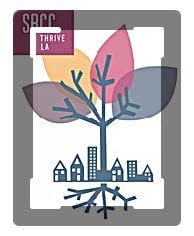
- Met with Family Resource Center (FRC) and community organization partners about building a system of care organized around Protective Factors.
- Met with key people related to the work on creating the Our Children Our Families Action Plan as well as furthered their efforts to build collaboration among the executive directors of FRCs.
- Led the Action Planning towards a unified child maltreatment prevention target.
- Held an event on the steps of City Hall where they had a representative from the Mayor’s Office as well as a School Board member, four city supervisors, the head of the Family & Children’s Services division of the Human Services Agency, and three executive directors from FRCs speak. Moreover, representatives from a broad cross-section of the community turned out for the event, including children and caregivers, social workers, educators, healthcare professionals, public health officials, and professionals in community-based organizations. The event and the announcement of the Our Children Our Families child maltreatment target received media coverage in the San Francisco Examiner.
- Their annual Blue-Ribbon luncheon had over 600 attendees from across the city, including philanthropists, community members, public officials, and business people.
- Published the Economics of Child Abuse: A Study of San Francisco, in 2017.
- Appointment of Katie Albright as Co-Chair of Our Children, Our Families Council’s initiative to reduce the rate of child abuse by 50% in the next five years.
- Raised awareness for Child Abuse Prevention Month by hosting an event on the steps of City Hall and receiving media coverage in the San Francisco Examiner in 2018.
- Gained the attention of policy makers and partners in child abuse prevention efforts with data related to the Economics of Child Abuse study.
- Worked with the San Francisco Unified School District to develop recommendations for an in-person mandated reporter training for district staff.
- Brought together a cross-sector training committee to conduct a needs assessment of citywide trainings on family violence and identifying gaps in trainings.
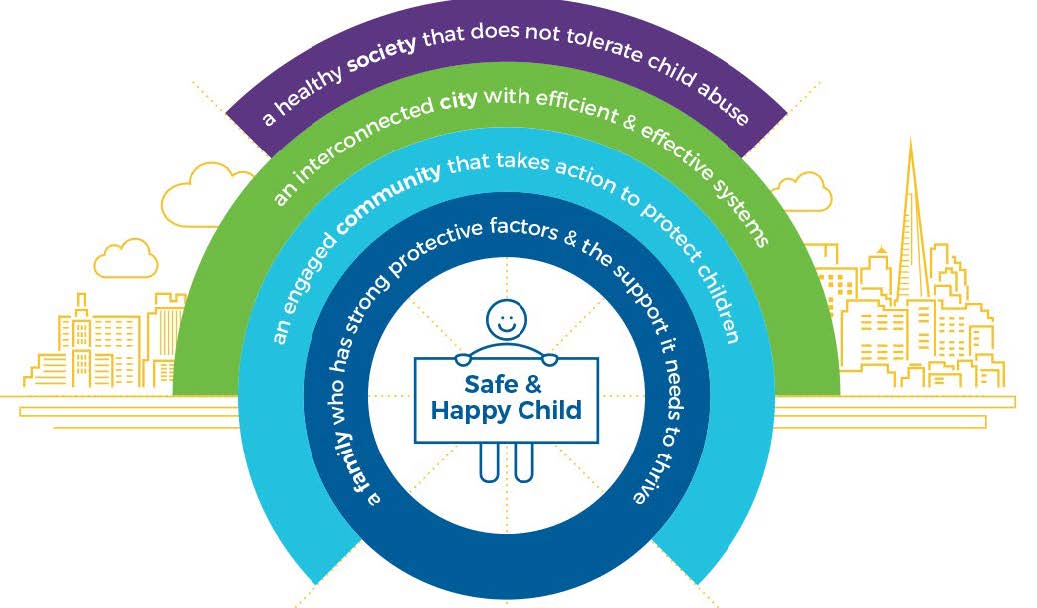
District of Columbia

The Pillars are values-based and strategy-focused, and each includes a series of specific outcome targets:
- Pillar One: Front Door – Families stay together safely.

- Pillar Two: Temporary Safe Haven – Children and youth are placed with families whenever possible. Planning for permanence begins the day a child enters care.
- Pillar Three: Well Being – Children and youth in foster care maintain good physical and emotional health. Children and youth in foster care get an appropriate education and meet expected milestones. Youth in
foster care pursue activities that support their transition to adulthood. - Pillar Four: Exit to Positive Permanency – Children and youth leave the child welfare system quickly and safely. Youth actively prepare for adulthood.
CFSA’s primary prevention work is conducted in partnership with the DC Children’s Trust Fund (DCCTF). Under terms of the current grant agreement, DCCTF receives and administers a portion of CBCAP funding for the District. The role of DCCTF is to strengthen families and protect children from abuse and neglect through public education and parent support programs. DCCTF plays a key role in support and capacity-building for the CBCAP grantees. Specifically, DCCTF develops the following resources:
- Public education materials that promote the primary prevention of child maltreatment
- Messages that emphasize and promote ways to strengthen families and develop healthy children
- Monetary, programmatic, and in-kind resources that support primary prevention efforts by leveraging funds and resources
CFSA collaborates closely with stakeholders such as the DC Superior Court, community-based organizations, advocacy groups, and service providers to support prevention of child maltreatment. Since 2001, DC Superior’s Family Treatment Court (FTC) has supported reunification through an effective partnership among the Family Court Operations Division (Family Court), CFSA, the Office of the Attorney General (OAG), and the District’s Department of Behavioral Health (DBH) Addiction Prevention and Recovery Administration (APRA).
The Agency continues to fund community-based preventive services primarily through its ongoing contracted partnership with the Healthy Families/Thriving Communities Collaboratives (Collaboratives). Specifically, CFSA maintains arrangements with sister DC government agencies to co-locate staff at each of the five Collaborative sites. For example, to support the health and well-being of families, there are co-located nurses and mental health specialists from the Department of Behavioral Health (DBH). These co-located positions are IV-E Waiver funded.
CBCAP funding supports what CFSA calls the “front yard” – a network of coordinated child abuse primary prevention resources and activities for children, youth and families that are not involved in the child welfare system but may be at-risk of involvement. To meet the specific needs of different populations, CBCAP-funded prevention programs included both out-of-home and home-based services, ranging from direct skill training to child behavior management and home safety to prevent child maltreatment. Services are also tailored to enhance parent-child communication to reduce risk for adolescent substance use, to build nurturing parenting skills, and to expand culturally specific interventions.
Through dedicated evidence-based programs, delivered by the three diverse community-based organizations, home visitation provides targeted family assistance, parent education, and empowerment and family strengthening.
Four additional grantees work within specific neighborhoods where CFSA has high numbers of families involved with the child welfare system to implement PESP programs. Grantees provide services to address the specific needs of this population. Each of the four PESP providers offered parents various supportive services, such as adult literacy, family events, car safety, job or vocational assistance, in-home parent coaching or others, depending on the needs of the family.
Hawaii

SMALLIFY
The CBCAP Coordinator submitted an application to the Hawaii Leadership Forum to be part of the SMALLIFY Accelerator for Innovation Sprints teamwork. The application included the challenge that would be worked on during the SMALLIFY training. The team consisted of the Sexual Violence Prevention and Domestic Violence Prevention Coordinators, the Department of Health Center for Disease Control Epidemiologist, and a consultant epidemiologist as well as the CBCAP Coordinator.
The team’s challenge was to identify sexual, domestic and child abuse-related data sources, and identify and select indicators/measures that would determine if outcomes were met or not met, and if the process was effective. The primary stakeholders included ECAS, the Department of Health and DHS, early childhood providers, early childhood advocates, and other community-based organizations/agencies who work with young children and families, and parents/caregivers. The benefits to be gained with the challenge is improving the well-being of Hawaii’s young children and their families by identifying baseline data to inform public awareness and prevention education efforts. These data were designed to be presented as an ACES and resilience “dashboard”. The product or outcomes provided a list of data sources and a list of indicators/measures to use in conjunction with the Frame Works Institute violence prevention communication campaign.
The campaign utilized CBCAP funds blended with DHS monies to establish a contract with Frameworks Institute to develop an innovative campaign to build awareness of all forms of family violence – including child abuse and neglect and intimate partner violence. The integration of these issues represents an important effort in reframing. Typically, advocates and service providers focus on either children or adults – a divide that is then reflected in the communication campaign. One result is families, professionals, policy member and the public may not understand how these issues are connected and what steps communities, institutions, programs, or families might take to resolve them in an integrated fashion. This activity is a major initiative sponsored by the ECAS Team 2 co-chaired by the SVP, CBCAP, and DHS.
Several messaging campaigns supporting safe and nurturing families are underway in Hawaii.
These are: the ECAS Team 2 Frameworks Institute work, HCAN leadership, and ECAS Collaborative Leaders Network. Agreement was reached by this triad to support, align and leverage resources, as appropriate, for their specific messaging initiatives. The following describes the work of each triad.
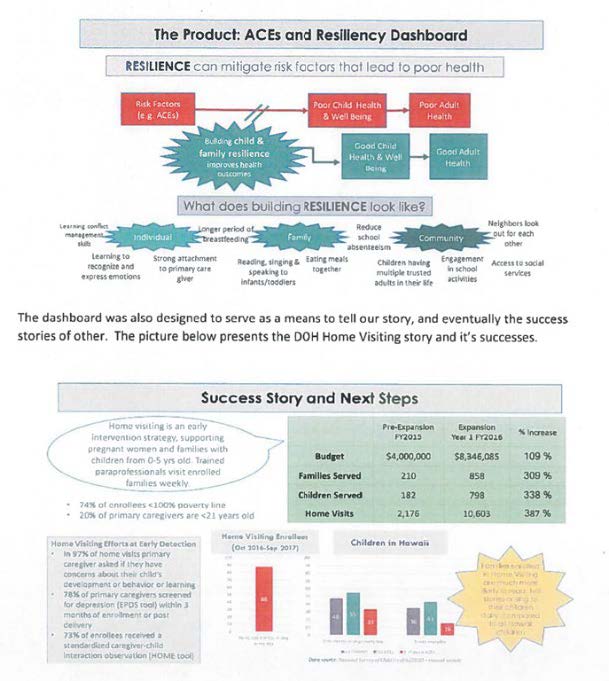
HCAN is sponsoring the Little Minds Matter initiative that is based on the premise that parents are a child’s first and best teachers. It targets families with children birth to 5 who are not currently in an early learning program, to enhance parents’ skills as first teachers by providing a range of resources and serves as a referral mechanism to available programs. The focus is on brain development and how young children learn. General themes of the initiative are literacy, “serve/return”, and executive functioning.
Words Matter goal is to strengthen early language development and attachment in families with young children through increasing the number of positive words a young child hears through reading, storytelling and singing. It is currently being piloted through several programs. The activity has a toolkit with books (with and without words, and local and national stories), song lyrics, refrigerator magnet with tips on increasing words throughout the day during daily routines, and a word counter that counts the number of words the young child hears from human voices and radio/tv.
The graphic below depicts the relationship across these three initiatives, where Team 2 Safe and Nurturing Families framework serves as the overarching frame, Little Minds Matter would provide a more concentrated message, and intentional referral to Words Matter.

Next steps for partnering on messaging are aligning objectives and branding and determining how to dovetail and maximize resources and work.
Indiana


In 2005 Indiana established a statewide secondary prevention initiative to prevent child abuse and neglect in addition to the long-standing home visiting program Healthy Families Indiana which has a specific target population. The initiative is Community Partners for Child Safety (CPCS) and is the main recipient of the CBCAP funds.
This service continuum builds community support for families, identified through self-referral or other community agency referrals, to connect families to resources needed to strengthen the family unit and prevent child abuse and neglect. To date, CPCS provides services statewide through contracts with regional service providers (see www.in.gov/dcs/files/CommunityPartnersProvidersMap.pdf). Indiana’s new funding system began in 2008 with child welfare funds disbursed at the state level and 18 newly created Regional Services Councils making the local decisions regarding their programs and funding needs with input from consumer families. The Regional Service Councils were given a Legislative mandate to make funding recommendations, for their regions, with the support of the DCS central office for the purpose of funding a statewide prevention effort, Community Partners for Child Safety. DCS continues to leave some allocations to the discretion of the local offices with approval of the Regional Services Councils. Local DCS leadership works closely with local community leaders and contracted service providers through the Regional Service Councils to identify primary and secondary prevention needs and services in the local communities to ensure the continuum of prevention services.
The purpose of this CPCS service is to develop a child abuse prevention service array that can be delivered in every region of the state. It is intended, through the delivery of these prevention services, a referral to/investigation by Child Protective Services will not be necessary. Community providers who refer to CPCS include, but are not limited to: social services agencies, local DCS offices, Health Families Indiana, Prevent Child Abuse Indiana chapters, Youth Services Bureaus, Child Advocacy Centers, the faith-based community, local school systems, and Recovery Support Programs. This program is funded through several sources including CBCAP, Kids First Trust Fund, State appropriation, and the Family and Children (state) Fund. Indiana’s CBCAP program, Community Partners for Child Safety (CPCS), had a budget of $21,896,283.02 in Fiscal Year 2018 providing community-based child abuse and neglect prevention throughout the state. While some families may benefit from an evidence-based clinical intervention, many families benefit from a temporary boost, someone to listen and provide good counsel, or very basic concrete supports such as help paying rent or a security deposit for housing, child care, transportation, legal services, or brief periods of respite care to allow parents time to seek help and work through a challenging situation. These types of services and supports coupled with efforts to enhance parenting skills, promote healthy child development, and build and maintain positive peer and relational support networks, before crises arise, are all critical primary prevention efforts that CPCS provides to help prevent bad things from happening in the lives of children and parents.
Iowa

- Public awareness of the effects of child abuse and ways to prevent it,
- Assistance to local partners in the development, implementation, management, and evaluation of child abuse prevention efforts, and
- Collaboration with other state agencies and coalitions to ensure continuity and accountability across the state.
Community Partnerships for Protecting Children
The Community Partnerships for Protecting Children (CPPC) is the community coalition network. CBCAP and the CPPC initiative have been collaborating and integrating their efforts to protect children since 2007. CPPC is a community-based approach that develops and implements local programs, services, supports, and policies to positively impact families and protect children from abuse. CPPC engages a variety of formal and informal supports, which include the faith community, neighbors, extended family, friends, and community service agencies to develop plans that will assist individual families in reaching their goals, while maintaining a safe, stable, and nurturing environment.
The long-term goal of CPPC is to protect children by improving policies and practices. The CPPC strategies are to engage community partners at the local level in changing the culture of the child welfare system. A key premise is that effective child protection efforts must engage multiple community partners. Since child maltreatment is frequently associated with a variety of individual, family, and neighborhood characteristics, collaborative efforts are critical.
Research has indicated that when parents are socially isolated and/or struggling with mental illness, developmental disabilities, substance abuse and/or domestic violence, their children are at greater risk for maltreatment. Therefore, CPPC incorporates four overarching strategies in its approach to child abuse prevention. The four CPPC strategies reflect and support the scope and purposes of CBCAP. These strategies include the following:
- Individualized Course of Action (Community-Based Family Team Meetings) build on individual family strengths and address the specific needs of children and families who may be at greater risk for child abuse. By utilizing established resources within a community, families are strengthened by supports that are accessible, effective and culturally appropriate. Community-Based Family Team Meetings (CBFTMs) help families and provide early and comprehensive support. Participant families experience increased family stability and improved access to local formal and informal resources and opportunities. Families participate in the planning and execution of these meetings, which in turn empowers them to meet their own needs.
- Neighborhood Networking organizes networks of neighborhood agencies and community supports to support families and prevent child abuse. In collaboration with one another, the networks form a continuum of preventative services for children and families. They offer public information and activities that focus on the healthy and positive development of parents and children while promoting child abuse and neglect prevention efforts.
- Shared Decision-Making Teams are local decision-making bodies used to plan and guide CPPC activities and support partnership efforts. These teams assess the strengths and needs of the community, identify the unmet need, and integrate solutions to promote primary and secondary prevention programs and strategies for all families in the community. These teams are also responsible for leveraging funds to support the mobilization, collaboration, assessment, and general operation of local programs designed to strengthen and support families in preventing child abuse and neglect.
- Adopting new policies and practices to enhance community connections is the change arm of CPPC. This strategy supports CPPC sites in conducting strategic, long-term, and outcome-focused planning that will promote sustainable systems change for child maltreatment prevention.
CBCAP funding and technical assistance are provided to local CPPC sites to develop and support community child abuse prevention services. The collaboration allows for CBCAP to provide funding for prevention services and offer a layer of technical support to an established team of community members.
On an annual basis PCA Iowa also evaluates outcomes of these CBCAP programs, through a contract with Hornby Zeller Associates, Inc. (now a part of Public Consulting Group), a national research and evaluation firm (see Evaluation report Attachment A)
Over the past few years, the IDHS Bureau of Child Welfare realigned some programs, putting all prevention services and programs under one program manager. This allowed for a more consistent and streamlined approach to services. ICAPP funds historically were filtered through different local entities referred to as Child Abuse Prevention (CAP) councils. What the state lead agency found, initially through surveys of providers and then as part of a more in-depth statewide Needs Assessment, was that at the local level CPPCs and CAP Councils typically consisted of the same key stakeholders, just with slightly different missions. For example, the CPPCs are focused on community engagement along the entire continuum of child welfare (including system involved families), whereas CAP Councils focus exclusively on prevention.
During FFY 2017 the decision was made to combine the two programs (ICAPP and CBCAP). Much of the work to complete the merger occurred during FFY 2018, including:
- Merger of Existing CBCAP and ICAPP Community Groups – Efforts continued to provide training and technical assistance to community groups regarding the merger of the programs. With the two programs combining into one, it was essential for communities to work together to address community needs and identify solutions. Identifying consensus involved a process to put a Memorandum of Understanding (MOU) in place to demonstrate buy-in and agreement by both CPPC sites and CAP Councils. By the end of December 2017, a MOU was in place for each of Iowa’s 99 counties to identify the eligible bidder (i.e., CPPC site or CAP Council).
- Needs Assessment and Strategic Plan – This work began in July of 2017 as a partnership between Hornby Zeller and Associates as a sub-contractor for PCA Iowa. One responsibility for the new ICAPP/CBCAP Administration contract was to conduct a statewide Needs Assessment which would inform a statewide Strategic Plan. In the first quarter of FFY 2018 a draft of the Needs Assessment was completed and shared with the state network for feedback. Based on the information gathered in the Needs Assessment a Strategic Plan was drafted and made public for feedback in December of 2017. (see Attachment B and Attachment C)
- Development of a Request for Proposals (RFP) – IDHS and PCA Iowa staff utilized goals set forth in the Strategic Plan to develop an RFP for communities to apply for funds for programming. The RFP was released in January 2018 and proposals were due mid-March. The requests were awarded, and new service contracts were in place on July 1, 2018.
Under the new contracts, CBCAP funds were designated to specifically support seven home visitation programs using the Healthy Families America model. This is a significant change from prior years, with seven CBCAP contracts now averaging $50,000/year as opposed to 35 contracts averaging $11,000. IDHS and PCA Iowa moved in this direction because the Needs Assessment and Strategic Plan indicated that small dollar mini grants often did little to expand the capacity of programs.
- DAISEY Data System – In efforts to better align and collaborate with other state efforts, IDHS grantees began transitioning to the DAISEY system out of the University of Kansas to collect participant demographic and evaluation data for family support programs in January 2018. This brought the ICAPP program (which now includes all those programs funded exclusively with CBCAP dollars) more in-line with other parenting services creating more efficiency statewide and for local family support workers. In addition, the integrated data system will hopefully reduce or eliminate the potential for duplication of numbers and more accurately illustrate the impact family support and prevention programs have throughout the state.
The IDHS program manager and PCA Iowa staff continue to serve on various stakeholder workgroups, such as Iowa’s Family Support Leadership Group and various component groups under Early Childhood Iowa (ECI), the state’s early childhood initiative. Participation in these interdisciplinary groups allows for greater impact and collaboration across the family support and prevention continuum.
South Carolina

During 2018, Children’s Trust furthered expansion of prevention programming to help build safe, stable and nurturing environments for children by developing the design of a cross-sector prevention framework for local communities called Empower Action, continuing the use of South Carolina ACE data to inform and guide prevention work, and advocated for legislative initiatives that advance the health, safety and economic capacity of the state’s families, all while building upon internal race, equity and inclusion work to ensure all of South Carolina’s people and families are supported.
One community-based collaborative approach funded in part through CBCAP is The South Carolina Adverse Childhood Experiences (ACE) Initiative. It is a public and private partnership that supports and promotes prevention efforts that keep children safe. ACEs have a significant impact on adult health, social and economic outcomes and South Carolina has consistently ranked at the bottom on indicators of child well-being compared to other states. The South Carolina ACE initiative includes four main components: training, data collection and dissemination, community-based efforts and a legislative agenda. Through the empowerment of communities, the South Carolina ACE Initiative helps children and families overcome the effects of traumatic experiences, prevent poor health outcomes and promote well-being later in life.
As a part of its statewide ACE initiative, South Carolina Children’s Trust focused on educating thousands of child-and family-serving professionals on the impact of adversity across the lifespan. As a result of these efforts, the organization has identified a need for next steps, or the “now what?” to help communities that are interested in preventing ACEs and the negative impact of ACEs.
Through an environmental scan and evaluative feedback from key stakeholders, Children’s Trust identified a need for a model that focuses on action for child well-being and the prevention of ACEs. The Empower Action Model merges important frameworks within key areas of public health and community psychology – the socio-ecological model, protective factors, the life course perspective, and race equity and inclusion with actionable items to build resilience for all families and address determinants of equity. The tool is centered around the principles of understanding, support, resilience, inclusion, connection and growth at each level of the socio-ecological model. It provides concrete examples developed for application of each of these principles in a checklist format. This model can assess the needs and readiness of communities, creating a plan for building partnerships and collaborations and identify areas of opportunity for growth and development, as well as building a plan for addressing these needs. The Empower Action Model can be applied to various organizations within a coalition or a coalition. See graphic below.
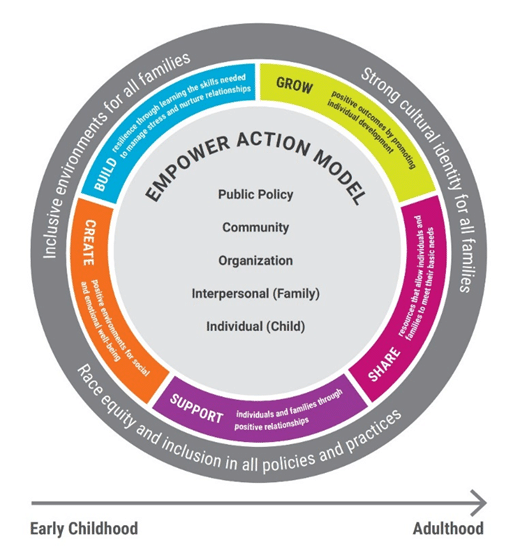
This model aims to provide clear and attainable steps to prevent ACEs and promote well-being for all individuals through the intentional building of protective factors. The local partner coalitions apply the Empower Action Model to work at all levels of the model through a cross-sector approach to develop action plans that are most useful and relevant to their respective populations. This work includes both county- contextual and broadly-based recommendations for organizational and public policies that support families. Children’s Trust provides facilitation support and technical assistance and measures the process and outcomes associated with the implementation of this model to develop best practices for promoting health and well-being through coalitions.
Although each community determines their own goals based on community need, three commitments are consistent across all community prevention coalitions:
- Use funding to contract with an identified facilitator and develop a sustainable long-range plan to address the prevention of child maltreatment and promotion of child and family well-being, specific to the needs of their community;
- Partner closely with the Parent Advisory Council in their community through inclusion in coalition, co-planning and continuous communication.
- Use funding to meet regularly with community stakeholders to create and accomplish plans for addressing the prevention of child maltreatment and promotion of child and family well-being.
South Carolina is currently working with 3 communities to implement the Empower Action Model. One of the projects is described below:
Resilient Richland
Resilient Richland is a county-wide initiative to prevent and mitigate the effects of childhood trauma. Resilient Richland is working to increase awareness of the resources, tools, and services that help prevent ACEs from happening in the first place – and help to identify if an ACE is happening in a child’s home. The initiative has a community-wide awareness campaign that highlights the social and economic impacts ACEs has on Richland County by providing a series of training opportunities to community members on how they can help. Resilient Richland is a partnership between the United Way of the Midlands, Children’s Trust of South Carolina and the Nord Family Foundation. The coalition includes over 40 Richland area organizations. The Children’s Trust is providing content expertise, training, and coalition support to help move the work forward, using CBCAP funds and matching support from the Blue Cross Blue Shield Foundation. Resilient Richland is using Children’s Trust’s Empower Action Model to help frame their action plans for building community resilience.
For additional information, click here to download the research brief.
Wyoming

WYCTF engaged in a comprehensive needs assessment/mapping project of all Wyoming counties to determine services and barriers to services for children and families. In 2018, WYCTF in partnership with Magellan Health, Wyoming Citizen Review Panel, Wyoming 2-1-1, Wyoming Kids First, and Wyoming Parent Information Center conducted and completed community cafés across all Wyoming counties. Upon completion, WYCTF worked with the School of Social Work at the University of Wyoming to assist with data analysis and reporting. The following information was shared, and five barriers were identified. These include:
- Access to mental health and substance abuse treatment which included long wait times, lack of specialization, affordability and availability of services.
- Access to affordable childcare services which included availability (particularly infant care), affordability, quality services, and after hours’ services (non-traditional times for shift workers).
- Access to affordable housing which included availability, options for individuals with felony convictions, and sober living options.
- Access to reliable transportation services which included after-hours and weekends, transportation to near-by communities for services, and affordability.
- Lack of knowledge of available community resources. This was presented as a concern from both the parents and the local professionals.
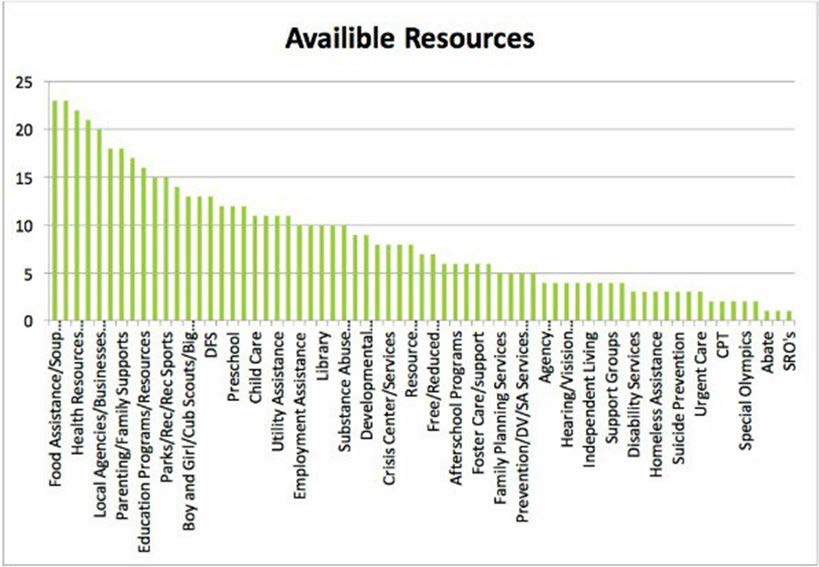
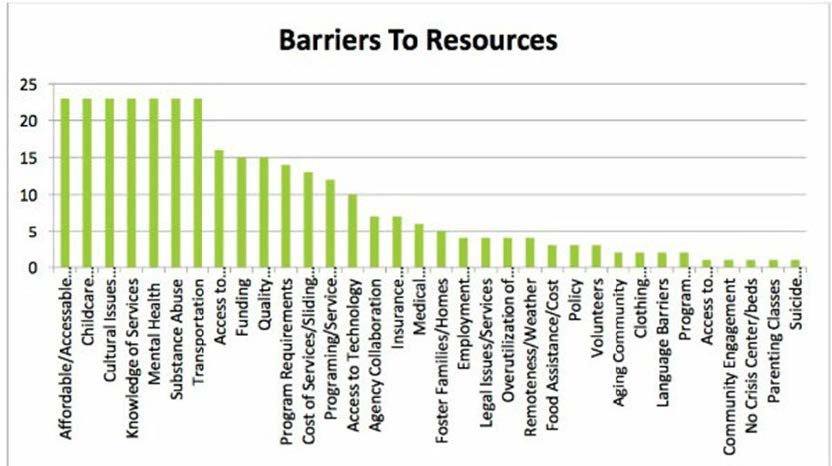
Based on the information that was ascertained during the Community Cafés, WYCTF is planning a second grant opportunity to the Child Protection Teams (CPT) across Wyoming. CPTs are multidisciplinary groups that focus on high risk families and community services. Each county team functions independent and develops their own approach to prevention and child welfare. The grant offers each county an opportunity to establish a prevention plan unique to their needs that utilizes the science of Adverse Childhood Experiences (ACEs) to guide the process. The grantees will be expected to address one of the five commonly identified issues across the state, as well as any other unique needs of the county. Each plan must incorporate at least two of the Protective Factors while utilizing an evidence-based/evidence-informed model.
Outcome Evaluation
Eight states share evaluation findings for their CBCAP funded programs. Click the links below to learn more about services and activities each state-funded and to view their outcome evaluation results.
Alabama

The Alabama Department of Child Abuse and Neglect Prevention-Children’s Trust Fund (ADCANP/CTF) oversees the CBCAP program. They partner with Auburn University (AU) to implement their evaluation approach.
The Auburn University evaluation approach includes several important elements:
- A valid measurement of participant demographics across all grantee programs (e.g., unduplicated numbers served, characteristics of participants).
- A valid measurement of program effects, i.e., documenting positive changes among participants attributable to participation in the program.
- The aggregation of program outcomes evidence across similar types of programs.
- The use of “user-friendly” methods of data collection and the provision of direct support by the research team to grantees.
Auburn University focuses on empowering the Alabama Department of Child Abuse and Neglect Prevention grantees with an understanding of the value of evaluation. AU has methods for “standardizing’ data collection across programs in each program category to combine data across programs but allows for some flexibility that recognizes that among programs in each program category there are distinctive differences in program design and goals.
Auburn University provides ongoing consultation with ADCANP staff on the evaluation design, implementation, and the use of study results. ADCANP and AU use study results in assessing the impact of individual programs and identifying exemplar programs as well as programs that may need special assistance in improving their design to promote program effectiveness. Auburn assists ADCANP staff in using the study results to inform current funding sources of program effectiveness and assists in the articulation of the linkages between program impact evidence and the reduction of risks for children of maltreatment.
Evaluation Design
Because of the vast numbers of programs funded by ADCANP, there is a uniform evaluation design. Across all programs, a format for gathering pre/post program change information establishes the extent to which objectives of the program were met. All programs utilize a standard form for gathering demographic information on participants. Program administrators collect “Intakes” (demographic information) from program participants at the beginning of the program cycle, then collect retrospective pre-post surveys from participants upon completion of the program cycle. Click here for a copy of the Executive Summary.
Auburn’s research team oversees the creation of databases and the valid entry of data (through reliability check procedures). Based on program type (i.e., Parent Education and Support, Home Visiting, Fatherhood, Respite, and Youth-focused), several program objectives were reflected in the survey questions administered to the participants. The objectives were then categorized within one (or more) of the five protective factors associated with the program type. Auburn incorporated the use of repeated measures analysis of variance (RMANOVAs) statistical procedures to identify statistically significant changes from pre-program levels to post-program levels. Click here for the report and see the tables below for an excerpt.
A sample of parenting participants (n=650) responded to an assessment of 7 goals. Analyses of measures (some using multi-items: Chronbach’s a ranges from .67-.91) using paired sample t-tests revealed statistically significant (p>001) improvements for participants on average in ALL targeted areas. The effect sizes ranged from .90-1.43. The average magnitude of the effect sizes for these improvements was 1.24 and can be considered large (i.e., .25 small effect; .50 moderate effect; .75 large effect).
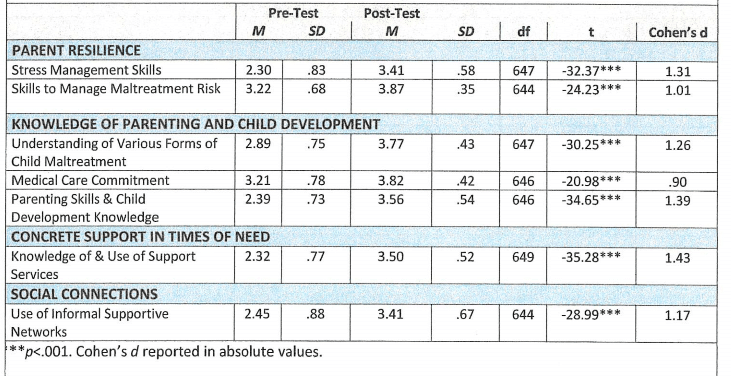
Colorado

The Colorado Department of Human Services (CDHS), is home to eight distinct offices, all of which support the agency’s vision and mission for Colorado. The most concentrated child maltreatment prevention and intervention work stems from two offices, the Office of Children, Youth, and Families (OCYF), home to the Division of Child Welfare (DCW) and the Office of Early Childhood (OEC), home to the Child Maltreatment Prevention Unit (CMP) that manages the CBCAP program.
The Office of Early Childhood (OEC) provides leadership to child maltreatment prevention through both internal and external programs and projects. Internally, the OEC provides leadership to the following initiatives:
- The Family Resource Center Program (FRCP) provides a safe, accessible place for families to connect with comprehensive, coordinated services that help them strengthen their families and become more self-reliant. Programs at each center are tailored to the culture, resources, and needs of the community they serve and focus on building on the strengths of each family and individual. Almost every family resource center offers a home visiting program and/or parenting education classes. They are also the primary home for the Colorado Community Response sites.
- Promoting Safe and Stable Families (PSSF) helps keep children and youth safe from maltreatment, allows them to remain safely with their families, ensures safe and timely reunification for children in foster care, and provides support services for families who have adopted or are considering It is comprised of four primary components: Family Support; Family Preservation; Time-Limited Reunification; and Adoption Support Services.
- Colorado Community Response (CCR) is a promoting practice for preventing child maltreatment, especially neglect, and strengthening family supports and resources. CCR services are short-term, entirely voluntary, and designed to engage families in proactively increasing strengths and alleviating family stressors. Services emphasize economic stability, financial coaching, and promote the development of natural support systems.
- SafeCare Colorado Program is an evidence-based in-home prevention service designed to stabilize families and prevent child maltreatment. SafeCare offers pro-active in-home, voluntary services that support at-risk families in understanding the health, development, and safety needs of young children.
During this grant year, the Child Maltreatment Prevention (CMP) Unit was responsible for three independent evaluations of the Family Support Services (FSS) program, Colorado Community Response (CCR) and SafeCare and OMNI Institute finalized an evaluation report for the ten Family Resource Center’s providing Family Support Services programming. All these programs are partially funded through CBCAP or matching state dollars. OEC is committed to evaluating all child maltreatment prevention activities. The following information provides an overview of these evaluations.
Family Support Services
According to the evaluation report, FSS grantees served 1,118 families by 10 OEC funded, family resource centers (FRCs). Of this group, all families completed a Colorado Family Support Assessment 2.0 (CFSA 2.0) assessment during the reporting period More than half of these families (56%) had at least one follow-up CFSA 2.0 recorded after services were completed.
In summary, FRCs provided 16,808 services to families, including over 9,800 basic needs services, over 4,300 parenting services, and over 980 adult education services. Overall, the evaluation findings suggest that family advocates supported by OEC-FSS funds serving vulnerable Colorado families showed improved outcomes in most indicators of family well-being. From baseline to follow-up, families showed statistically significant gains in the areas of income, cash savings, housing, employment, debt management, food security, childcare, physical health, mental health, and transportation.
Additionally, the percentage of families who indicated a safe, stable or thriving situation increased significantly from baseline to follow-up in the areas of income, cash savings, employment, housing, debt management, childcare, food security, mental health, physical health, and transportation. Families had significantly higher scores at follow-up than at baseline on three protective factors – Concrete Support, Family Functioning/Resiliency, and Social Support. Finally, from baseline to follow-up, families significantly increased their scores on both subscales of the CFSA 2.0: Economic Self-Sufficiency and Health. to see the evaluation report, click here.
Colorado Community Response
An independent evaluation has been underway for the Colorado Community Response (CCR) program. The final report for this first evaluation was completed during the grant period. The CCR program served 1,900 families in 28 counties during the evaluation. The key findings showed that CCR completers had significantly fewer founded assessments (p < 0.05) and out-of-home placements (p < 0.05) during a one-year follow-up period than did families with similar demographics and case characteristics who did not complete CCR.
In addition, the protective factors domains of Resiliency, Social Support, Concrete Support, Nurturing and Attachment, and Child Development/Knowledge of Parenting increased for participating families. Families that completed CCR demonstrated an improvement in self-reliance, demonstrated by shifts in “readiness for change” areas between pretest and posttest. The majority of caregivers who completed a posttest expressed high levels of engagement with their CCR worker as well as satisfaction with the program and the services they received.
For additional information, see the Colorado Community Response Program final evaluation.
Colorado Child Maltreatment Prevention Framework for Action
Colorado’s Child Maltreatment Prevention (CMP) Framework for Action was developed in April of 2017 and is being used by the OEC as the strategic vision for prevention activities in the state of Colorado. CBCAP funding was used to pay for implementation grants. The funding is distributed to community-based organizations to support strategies, identified through local prevention planning, that align with the Colorado Child Maltreatment Prevention Framework for Action. The following provides an update on the evaluation activities.
During this reporting period, the OEC, Zoma Foundation and Early Milestones Colorado worked with a Doris Duke Fellow at Colorado State University to conduct a process evaluation of the child maltreatment prevention community planning with the Cohort 1 grantees. The goals of this evaluation were to (1) identify which aspects of the CMP Framework planning process worked well and which could be improved for future cohorts and (2) to document preliminary outcomes and community benefits to taking part in the CMP Framework planning process. The evaluation was completed with assistance from all 15 community grantees and consisted of:
- Pre- and post-planning period surveys
- Post-planning period interviews
- Implementation checklists
- 90-day follow-up surveys
Findings from this process and outcome evaluation suggest that the CMP framework is a feasible approach for coordinating community-level prevention of child maltreatment. Preliminary findings suggest that the CMP framework increases community capacity, strengthens alliances among partners, and increases community support for strengthening families and preventing child maltreatment. However, qualitative interviews revealed a few aspects of the framework that could be addressed to improve implementation (e.g., framework language). Evaluation results are included in both the Evaluation Report and the Child Maltreatment Prevention Planning Progress Report.
Louisiana

The Louisiana Children’s Trust Fund’s (LCTF) main objective is to aid in the prevention of abuse and neglect in Louisiana. To support this work, LCTF provides funding to a variety of prevention efforts to protect children, strengthen family well-being, and educate the public about children’s safety. In 2017-2018, LCTF provided $847,300 to 30 agencies through 46 grant awards.
All 46 awarded projects completed the end of year data collection survey. The majority of the grantees (38 out of 46, 82.6%) reported an evaluation of their project was conducted to assess its effectiveness. Some of the findings and recommendations are summarized below.
- The most commonly used evaluation design was pre-test/post-test (n=18).
- The most commonly reported barrier reported concerning recruitment, implementation, and retention issues (n=27, 58.7%).
- Almost all of the grantees (n=44) reported participating in child abuse and neglect public awareness activities during the year. These activities included PR campaigns, outreach, presentations, handouts, and special events.
- Programs and conferences were implemented in five LCTF-identified areas of intervention, namely, 1) Teaching children personal safety and life skills, 2) Education and support services for parents, 3) Hospital and/or home visitation and support services to families, 4) Public awareness and education programs for adults, and 5) Training and education of teachers, professionals, and volunteers.
LCTF has partnered with Louisiana State University Social Research and Evaluation Center (LSU-SREC) to assist with appropriate and rigorous methods to examine the impact of services on program recipients, as well as provide information for organizational decision-making. Through this process, LSU-SREC team reviews, revises, and streamlines the grant application process, requirements, and forms and has successfully worked with LCTF to transition to an electronic grant application. LSU-SREC provides grantee organizations with technical assistance to increase their capacity for program evaluation, data collection, and the utilization of results. LSU-SREC offers consultation services through online training and webinars, phone and conference calls, on-site visits, in-person meetings, and email correspondence.
All funded grantees are required to complete a mid-year quality assurance and evaluation report that provides information to LCTF relative to identifying the performance measures of the program in relation to the grant’s benchmarks, such as specific numbers of the individual who are receiving services. , This includes the type of population served (i.e. ethnic background of participants) and the location of services performed (i.e. rural parishes).
Additionally, agencies are mandated to submit two reports to provide LCTF will data collected and findings through LSU-SREC. The report includes benchmark data and outcomes that which the provider outlined in their evaluation plan in their LCTF grant application evaluation plan. LCTF evaluates the effectiveness of the programs according to the goals and objectives met each reporting period. In addition, the Executive Director conducts site visits as part of the evaluation process to discuss the fidelity of the program and provide technical assistance and support to grantees. Information from the site visits as well as periodic reports are combined for a formative evaluation of the programs and conferences. The final report, or the 12-month submission of data, covers issues on benchmark data compliance, the satisfaction of consumers, review of program services, as well as the satisfaction of providers with LCTF.
Click here to read the 2017-2018 LCTF Annual Report provided by Louisiana State University Social Research and Evaluation Center.
Montana

Continuum of Evaluation Approaches
The CBCAP State Lead, the Montana Children’s Trust Fund has collaborated on several projects to assess the need for child abuse prevention services in their state and evaluated their current programs. See how they are addressing the continuum of evaluation approaches.
Assessing the Needs:
The Montana Children’s Trust Fund (MT CTF) contracted with the University of Montana to complete a statewide evaluation of risk factors data for child abuse and neglect, policies and practices for infants and toddlers, and social norms research campaigns. The Montana Child Abuse and Neglect Prevention Evaluation was finalized September 2017 and shared with partners and colleagues during this reporting period.
The goal of the evaluation was 1) to map the current primary and secondary child abuse and neglect prevention initiatives currently in place across the State, 2) to gain an understanding of the available data regarding risk factors and risk populations for abuse and neglect across Montana, 3) to summarize the policies and practices that exist for infants and toddlers in Montana, and 4) review social norms research.
Based upon these findings, Dr. J. Bart Klika made seven recommendations listed below.
- Participate in the maintenance of a statewide prevention resource list.
- Develop and conduct trainings on the public health approach to prevention.
- Address cultural needs in child abuse prevention programs.
- Support initiatives to address family economic indicators.
- Monitor regional trends in child maltreatment.
- Convene stakeholder group to finalize Zero to Three Toolkit and develop a plan of action.
- Develop a plan for understanding and addressing social norms in Montana.
During the December 2017 strategic planning session, MT CTF prioritized the recommendations made by Dr. Klika based on impact, influence, and effort. The top recommendations were (4) supporting initiatives to address family economic indicators and (7) developing a plan for understanding and addressing social norms in Montana. MT CTF has been participating in Parenting Montana, a statewide campaign to reduce underage drinking by focusing on social norms, social and emotional learning, and parenting skills and tools using a Positive Cultural Framework. Additional projects tying to the evaluation are anticipated for FY2020.
Montana Parent Survey:
As part of the Parenting Montana campaign, a statewide survey was conducted by the Center for Health and Safety Culture at Montana State University to explore the social norms of Montana parents around underage drinking. Along with the valuable insights into underage drinking, the survey also examined social and emotional competencies of parents. Parents with strong social and emotional competencies were over six times more likely to engage in protective behaviors than parents with low social and emotional competencies. For more information on the survey, visit Montana Parent Survey Results.
Montana Children’s Health Data Partnership Project:
This project began in February 2018 to develop actionable, shared early childhood performance measures for use across Montana to improve the social determinants of health for children. MT CTF will incorporate the following measures, which were identified by stakeholders across Montana, into future Request for Proposals. For more information visit, Montana Children’s Health Data Partnership Project.
- Low birth weight babies
- Post-partum visit within 56 days
- Access to quality care/early education
- 3rd grade reading levels
- Immunizations on-time by age 2
- Quality well child check
- Evidence-based home visits
- 0-5 Foster care rate
- 0-5 Homeless rate
- WIC usage rates
- Prenatal care initiated in the 1st trimester
CBCAP Program Evaluation:
MT CTF provided multi-year grants throughout the state to provide primary and secondary child abuse and neglect prevention. Each grantee was required to develop or update their logic model as part of the application for funding, which includes methods for evaluation. Funded programs chose their means of evaluation as they deemed appropriate.
MT CTF collected the following information from each funded program, which were evaluated by MT CTF in relation to their original, projected outcomes included in their logic models.
- Numbers of individuals and families receiving direct preventative services
- children, parents/caregivers, families
- children, parents/caregivers with disabilities
- Number of individuals who participated in awareness, collective impact, or trainings
- Stories and testimonials
- Successes and challenges
- Meaningful parent leadership
- Qualitative and quantitative data based on identified outcomes and indicators
- Outreach activities, including for special populations and Strengthening Families Month
For more information, visit the Montana Children Trust Fund.
Nebraska

Nebraska Children and Families Foundation as the CBCAP Lead Agency strives to work in partnership with all communities to improve the health and well-being of children and families.
This information focuses on both the work with communities to build locally based systems known as Community Well-Being sites and the strategies associated with these systems. Multiple partners working in coordination through community collaborations are implementing the strategies. Evaluation of locally-based prevention systems looks at the collaborative functions of these systems. It incorporates both implementation data and outcome data to answer questions such as “What is the degree to which collaboratives have embraced a collective impact approach?” and “To what extent does a collective impact approach influence outcomes?”
Likewise, the evaluation of strategies incorporates implementation data and outcome data. Implementation data, for example, are used to answer such questions as: “How much and what type of service was provided?” How well are strategies working for families? And “To what extent are strategies adopted and to what extent are strategies evidence-based?” Outcome data are being used to answer questions such as “To what extent did strategies improve child or family well-being?”
Furthermore, for the evaluation of funded prevention strategies Nebraska Children (NC) has adopted Results-Based Accountability (RBA) as a data-driven decision-making process to help communities improve the performance of their adopted strategies and to ultimately improve the lives of children, families, and their communities. NC staff, consultants, and evaluators have worked with the communities to develop an RBA chart for each of the primary strategies implemented by their collaborative. Data are collected and reviewed as part of their decision making and continuous improvement process.
Overall Summary of Children and Families Served
During the 2017-2018 evaluation year, Nebraska Children provided funding and other support to eleven communities to promote children’s safety and well-being through a range of prevention strategies. Communities served large numbers of families and their children across multiple strategies. Overall, more than 1500 families and more than 10,000 children were served directly in the past 12 months. More than three-quarters of these families were at risk due to poverty and approximately 40 percent identified as Hispanic, Black, or Native American. Communities had even broader reach by implementing community-wide strategies (e.g., community resource fairs). When families engage in these events they are considered “served indirectly.” These broad-based strategies reached over 3200 families and 3800 children.
Collective Impact
In order to evaluate the collective impact efforts of the Collaboratives, focus groups were conducted at six longer-standing Community Well-Being (CWB) sites during Spring/Summer 2018. The focus groups sites conducted were Dakota County Connections, Families 1st Partnership – North Platte, Fremont Family Coalition, Norfolk Family Coalition, Panhandle Partnership, and Zero2Eight Child Well-Being Initiative – Platte and Colfax Counties. These focus groups were conducted in person. A standard set of questions related to the process and impact of collective impact was used. CWB coordinators determined the composition of the focus groups. Focus groups were recorded, and the University of Nebraska Medical Center’s (UNMC) Munroe Meyer Institute staff analyzed these recordings and the notes from facilitators. The analysis focused on identifying the most prevalent strengths and challenges associated with collective impact work to date.
Evidence-Based Practices
How do you know if a strategy is working? The answer to this question can be found by reviewing both the quantitative and qualitative data that are summarized in this report. Typically, in the report, the qualitative data will include scores between two groups (e.g., students who are English Language Learners compared to students whose native language is English) or scores of a group over time (e.g., students’ fall language compared to their spring language). Statistical analyses will provide information to determine if there were significant changes in the outcomes (p value) and if those significant values were meaningful (d value or effect size). The effect size is the most helpful in determining “how well did the intervention work” (Coe, 2002). Qualitative data will provide more detailed insight into how the program is working and outcomes from key informants’ perspectives. This report will provide a description of each of the funded strategies. The evaluation findings for each strategy will provide data on the progress of implementation and outcomes across communities.
The Core Strategies implemented through the Community Well Being prevention continuum are:
- Community Response
- Circle of Security Parenting
- Community Cafés
- Community Learning Centers/Beyond the Bell
- Families and Schools Together (FAST)
- Parent-Child Interaction Therapy (PCIT)
- Parents Interacting with Infants (PIWI)
Each community also can select and implement supporting prevention strategies focused on strengthening families based on their individual community assessments of need. The full array of these supportive strategies is listed in the Community Well-being Annual Report.
Community Response
Did Community Response help to support families to improve their Protective Factors?
Several strategies were used to evaluate the efficacy of Community Response. At the completion of services, families are asked to complete the FRIENDS Protective Factors Survey. A total of 191 parents completed the survey. A pair-samples t-test analysis was completed to compare the Pre-Post Protective Factor Survey (PFS) scores. The PFS was completed when families were discharged from services. The results showed that families made significant improvements on Protective Factors in the areas of Social Connections (p<.001; d=0.539) and Family Functioning/Parental Resilience (p<.001; d=.500). These results suggest parents participating in Community Response improved their Protective Factors at the completion of services.
Did Community Response help to support families reaching their goals?
Eight communities reported case closure data. One hundred forty-seven (147) parents were discharged from Community Response on whom there were completed data. The case closure data revealed that these families had 513 identified goals. The highest number of goals were identified in the areas of housing (68) and financial (66). Parents were able to complete two-thirds of their goals (67%). The goal areas that had the highest completion rate were food and nutrition (82%) and parent’s education/jobs (74%). Health was the goal area that had the lowest completion rate (58%).

Did families’ informal supports improve?
In addition to completing the FRIENDS Protective Factors Survey (PFS), families were asked at intake and discharge to identify the number of informal supports that were available. Reported findings are based on the 82 families that had data in this area. At case closure, 44% of parents indicated that they had three or more informal supports. These results suggest that the majority of the families have few (<3) informal supports.
Were parents satisfied with Community Response services?
Overall, the parents (99%) that were served by Community Response felt respected and valued by staff. Most (71%) also reported that their relationship with their child had improved. The majority (83%) reported having learned at least one technique to help their child learn.
For more information, visit The Community Well-Being 2017-2018 Evaluation Report.
Washington
Protective Factors, Outcomes, Indicators & Continuous Quality Improvement
The CBCAP Lead Agency is housed within the Department of Children, Youth, and Families (DCYF). Within DCYF, the Strengthening Families Washington Team (SFWA) serves as the child abuse prevention arm by building partnerships at the local, state, and national levels to strengthen families in this state. This team leads the following large bodies of work:
- Community-Based Child Abuse Prevention (CBCAP)
- Children’s Trust Fund
- Home Visiting Services Account
- Prevent Child Abuse America, Washington State Chapter
Washington had 16 CBCAP program contracts in Fiscal Year 2018. Each awarded contract received support in implementing continuous quality improvement (CQI) and evaluating their program while aligning with the protective factors framework. This work helped the program meet its stated goal of having strong data-driven state and local CQI processes and contributes to the overall goal of increasing data and evaluation capacity for local programs. While most programs likely impact most protective factors in their work with families, grantees were asked to focus their evaluation activities on one protective factor that was of interest and relevance for their program.
Below is a summary of two CBCAP funded program’s year-end evaluation, detailing outcomes and relevant indicators, data, and/or key findings.
For more information about Washington’s evaluation work, contact the CBCAP State Lead.
Center for Human Services
Disciplina Positiva
Shoreline, WA
Disciplina Positiva is a parenting education program for Spanish speaking, Hispanic/Latino families with children aged birth – 5 years old, with a focus on families with low income. The program explores ways parents can communicate more positively with their children as a way of managing behavior and promoting social skills in their developing child. Session topics include: Parenting Styles, Brain Development, Emotion Coaching, Age-Appropriate Child Needs and Behaviors, and Conflict Resolution & Problem Solving. A typical class routine includes facilitated information sessions, discussions, experiential activities, and role-playing scenarios to practice concepts and techniques. This funded program identified Nurturing and Attachment as the protective factor on which they chose to focus their evaluation. Below is an example of one of the 5 outcomes they chose to focus on in Year 1.
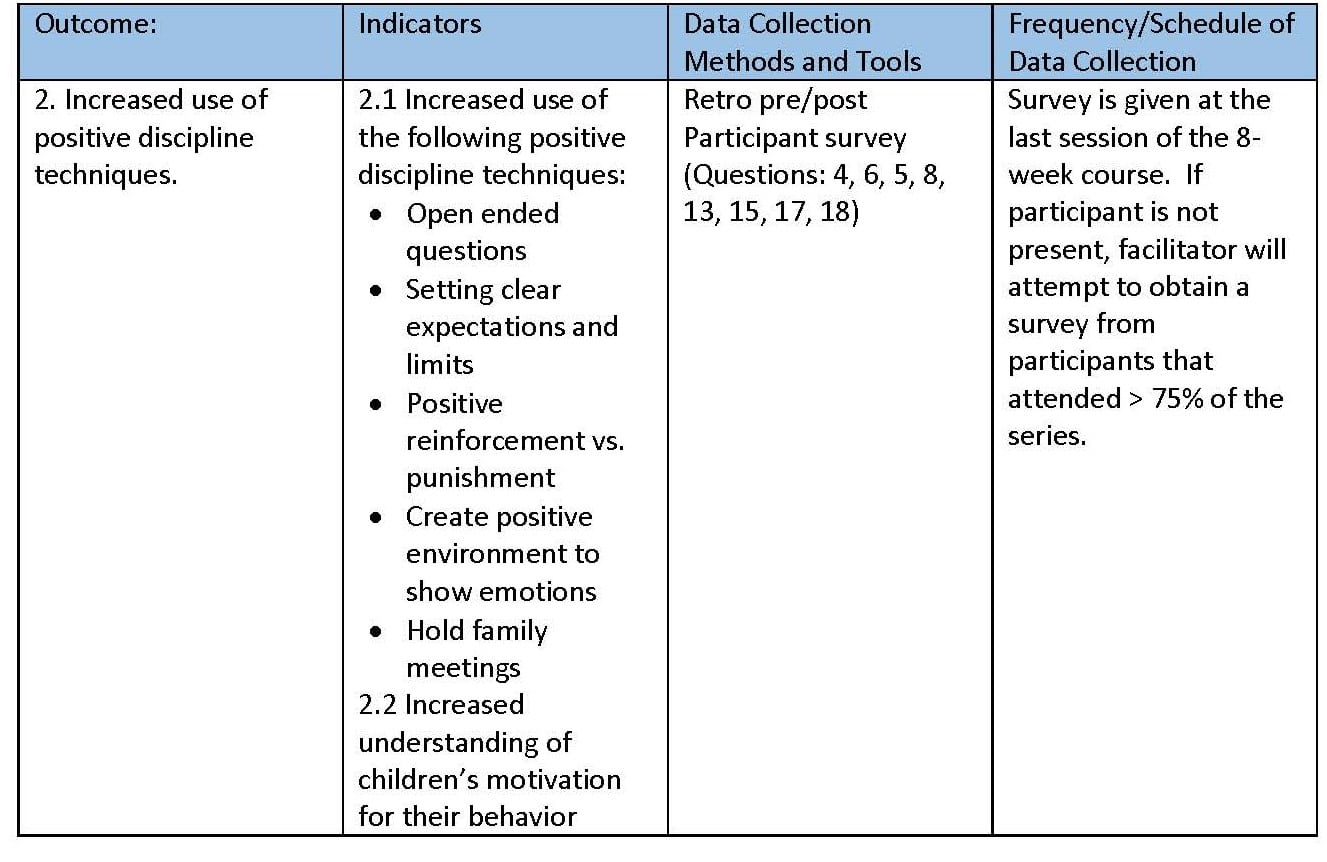
Outcome #2 Description:
This data is addressing the main philosophy of Positive Discipline of being firm and kind; therefore, we are trying to measure a decrease in parenting behaviors that go against the philosophy and determine if parents increase their use of specific Positive Discipline techniques, such as setting limits, holding family meetings and seeking to understand motivations behind behaviors. Table 2 illustrates the percentage of changes based on behaviors and techniques participants used before and after taking the class. In addition, through our open-ended questions, many themes emerged as to families’ increased use of positive discipline techniques that are highlighted in the Outcome Summary (below).
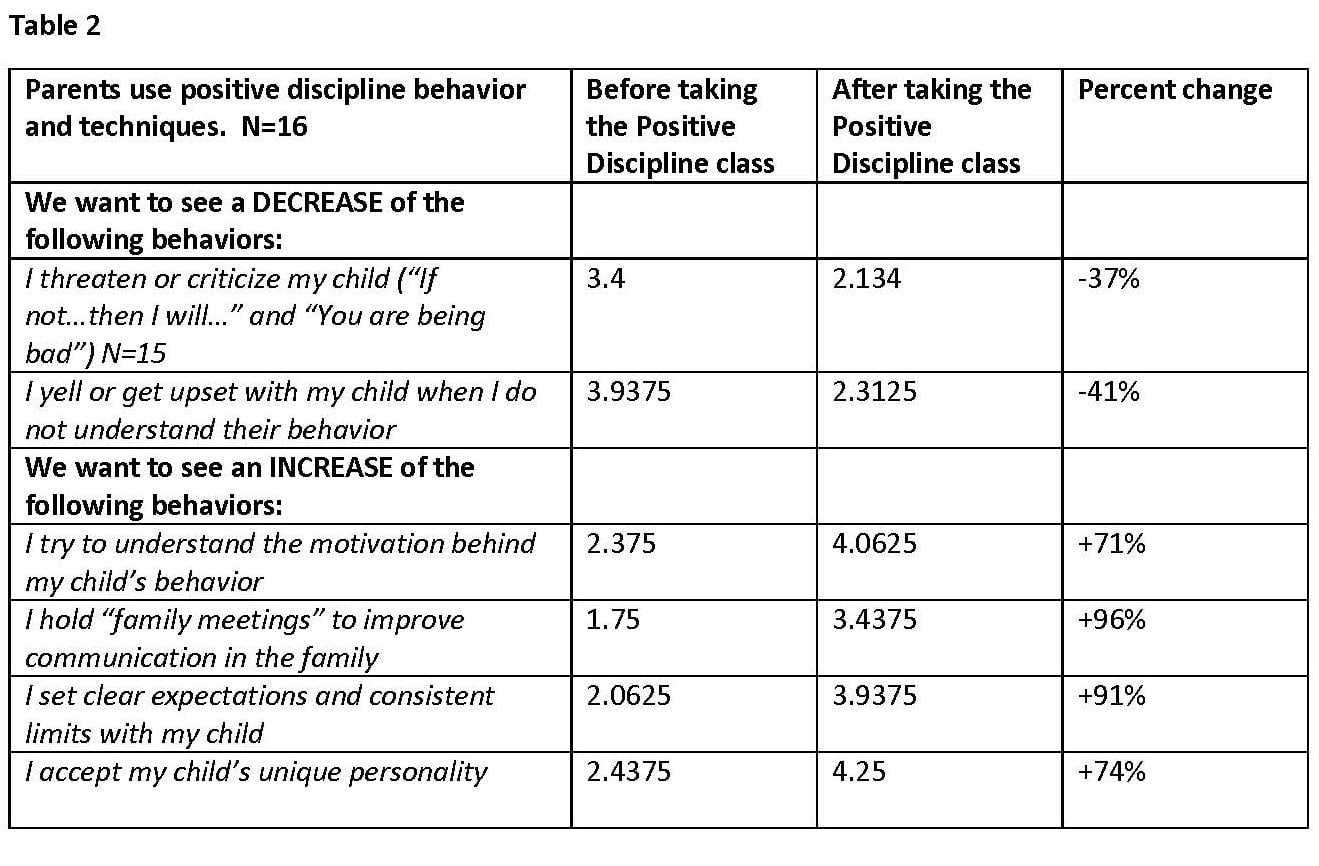
Outcome #2 Summary:
As Table 2 indicates, participants report increased use of positive discipline techniques and a decrease in the use of punitive punishment techniques that do not align with the Positive Discipline parenting method and are risk factors for child abuse and neglect. The most significant increase is in the use of holding “family meetings” and setting clear expectations and consistent limits.
When asked what things participants are doing differently as a parent since participating in the Positive Discipline class, the qualitative data collection revealed a majority who noted their use of positive discipline techniques. Overall, a majority noted that their communication with their children is more positive, and the technique that was implemented by most participants was emotion coaching. The use of the emotion coaching technique is instrumental in strengthening the protective factor of the social and emotional competence of their children. Other themes that emerged were participants being more patient, showing their children respect and empathy, and seeking an understanding of their child’s needs, wants, and behaviors. Many participants noted that they discontinued the use of punitive punishment techniques after taking the class. To quote participants (Spanish to English translation) “I do not scold them with spanking. Not scream.” And “apply different strategies instead of using shouts.”
Housing Hope
Strong Parents, Strong Kids
Everett, WA
This program serves very low-income families who have either experienced homelessness or are at risk of experiencing homelessness. This Program provides wrap-around supportive services for the family consisting of 1) parent education, intervention, mentoring and support provided by a Child and Family Specialist, 2) child assessment and individualized parenting strategies provided by a Mental Health Professional, and 3) parent education courses at the College of Hope. The goals of this program are to increase parent engagement and knowledge of parenting and child development. This funded program identified Knowledge of Parenting and Child Development as the Protective Factor to align their evaluation. Below is an example of two outcomes.
Outcome 1: Increased parent knowledge of child development
Indicator: Parents will self-identify an increase in knowledge of child developmental stages
Data collection method:
- Protective Factors Survey evaluation questions 12-15
- Written surveys, pencil, and paper
Frequency/Schedule of Data Collection:
- Tomorrow’s Hope:
- New Families – at program intake and annually
- Existing Families – annually
- College of Hope:
- At the end of each course
- Teen & Young Family:
- At entry and annually
- Child and Family Specialist:
- After 6 sessions of at exit on a rolling basis.
Outcome 2: Increased parent knowledge of positive, age-appropriate discipline strategies. Indicator: Parents will demonstrate an increase in knowledge of positive discipline and will view appropriate discipline strategies positively
Data collection method:
- Protective Factors Survey evaluation questions 12-15
- Written surveys, pencil, and paper
Frequency/Schedule of Data Collection:
- Tomorrow’s Hope:
- New Families – at program intake and annually
- Existing Families – annually
- College of Hope:
- At the end of each course
- Teen & Young Family:
- At entry and annually
- Child and Family Specialist:
- After 6 sessions of at exit on a rolling basis.
Protective Factors Survey Data
Housing Hope is proud that during this grant year, we collected 147 Protective Factors Surveys (52 Retrospective and 95 pre/post) across all four ChildHope Programs: College of Hope parenting courses, Tomorrow’s Hope Child Development Center, Teen and Young Family Program and one-on-one interventions provided by Child and Family Specialists. Retrospective tests have been the most useful data analysis for several reasons. First, it requires every participant to have comparative data, eliminating the program of participants who only complete a pre- or post-test. Secondly, because it asks participants to reflect on their knowledge prior to the intervention after the intervention has taken place, it mostly eliminated the problem of participants “not knowing what they don’t know” and consequently rating themselves artificially higher on the pre-test because they are not familiar with the course material or other aspects of the intervention. We have chosen to present the retrospective data in this section.
Results are presented in the tables below according to the four domains of the Protective Factors Survey that are included in the Retrospective test. The Retrospective test only measures the Concrete Support domain once, thus there is no “post” data on Concrete Support. Each domain scores participants based on a 1 through 4 scale, with 1 being the minimum score and 4 being the maximum score.
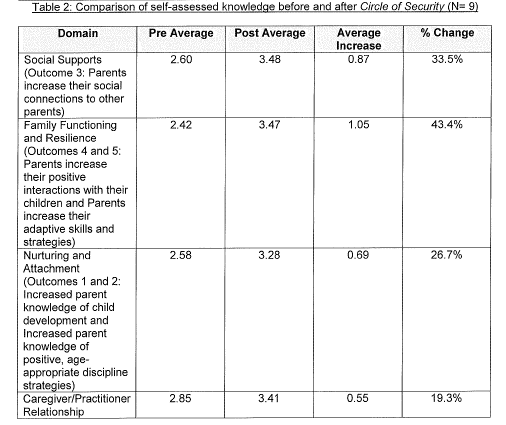
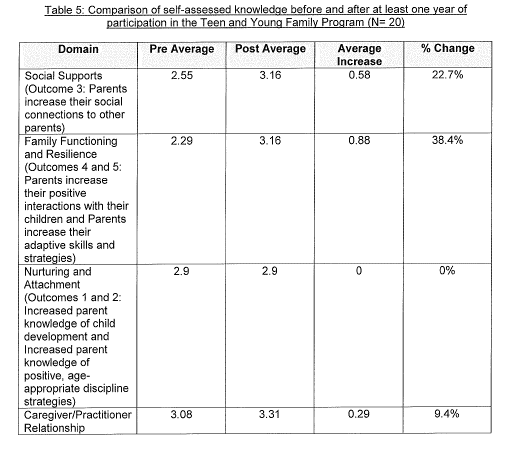
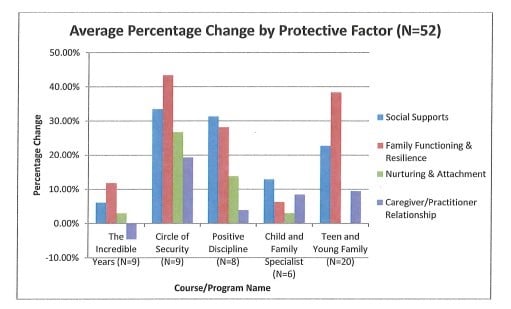
Halfway through the grant period, there was a change in the survey provided to families resulting in a smaller sample size than desired. A smaller sample size does not allow us to assess the effectiveness of an intervention.
However, with these early results, it appears the areas of Family Functioning and Support have been positively impacted by the interventions.
The plan is to continue to track these outcomes for at least the next 24 months to evaluate the effectiveness of our interventions in these areas, as well as to evaluate the impact of simultaneous interventions. This process provided staff with a better understanding of the areas we are strong in and areas for growth.
West Virginia

In state fiscal year 2018, Starting Points Family Resource Centers, In-home Family Education (IHFE) programs, and Partners In Prevention (PIP) grantees were evaluated using the West Virginia Family Survey. The West Virginia Family Survey is designed for use with families, specifically adults, who are participating in child abuse prevention services. Agency staff administer the survey to families at enrollment and again every six months following enrollment, or at the conclusion of one-time events and workshops. Agencies administer the six-month survey to families who have been involved in the program for a minimum of three months. The primary purpose of the West Virginia Family Survey is to provide feedback to agencies for continuous program improvement and evaluation purposes. Survey results are designed to provide agencies with the following.
- A snapshot of families served.
- A measure of the changes in protective factors.
- An assessment of areas where staff can focus on increasing specific family protective factors.
- An evaluation of the program from the participants’ perspectives
- A summary of participants’ feedback, including their satisfaction and impression of services.
The 2018 West Virginia Family Survey found that families who participated in West Virginia’s CBCAP programs view the programs positively. Most participants agreed that program materials were helpful (69%), that they felt comfortable expressing their problems (72%), and that they felt respected by the staff (76%).
From the analysis of the West Virginia Family Survey:
Families clearly value IHFE programs, and the use of assessments shows that home visitors are using the identified tools to determine families’ needs and provide targeted services. The Protective Factors Survey results show that families have high levels of skills and behaviors associated with protective factors at both enrollment and follow-up. Although some families show improvements in protective factors over time, they are the minority across domains and most program models. The domain with the most IHFE participants improving was Child Development and Parenting, where 44% of families saw an increase. Across the models, that was also the domain that the most Healthy Families America (HFA) and Parents as Teachers (PAT) participants improved. In contrast families in the Maternal and Infant Health Outreach Workers program (MIHOW), saw more improvements in Family Functioning and Resiliency and Social-Emotional Support. This shows that different home visiting models are helping families in different areas.
Families who have the opportunity to participate in playgroups, whether as a supplemental service to one-on-one home visits, as an optional community group for new parents or as an ongoing activity to support all families, find them to be beneficial to their children as well as themselves. There are, however, a number of families who have not had the opportunity to participate in a playgroup, primarily due to the times they are offered, the location, and the lack of transportation. Those who have participated have enjoyed the social connections and the opportunity to share child development and parenting information. Programs continue to explore how they can best address these challenges and increase the number of families participating.
PIP participants, regardless if they participated in a single or a multi-session event, report that the program has been helpful to them, especially in their ability to make decisions that are good for their children.
From the analysis of the West Virginia Family Survey:
Looking more closely at the protective factors questions, caregivers are first asked what topics are covered at events. Sessions appear to help most parents build a variety of skills. At PIP events, most commonly reported skill areas of focus were making food decisions; knowing where to go for food, clothing, or housing; and knowing how to help their child. All of these falls into the Family Functioning and Resiliency and Concrete Support protective factors domains. Overall, PIP events appear to be helpful to families and provide opportunities for them to build new skills in parenting, coping, and providing for their families.
For more information on the West Virginia Family Survey, click here.
Starting Points Family Resource Centers
The Starting Points Family Resource Centers are all unique. Although all must address some of the core needs, the centers and programs look quite different. The requirement of logic models helps programs to determine what sorts of outcomes they are affecting, particularly in terms of Protective Factors. Centers report quarterly on their progress toward their logic model and outcomes as well as receiving yearly feedback from Hornby-Zeller Associates (HZA) on the WV Family Survey. Evaluation strategies used in assessing Starting Points Family Resource Centers:
- A quarterly report is submitted on services and the number of families served within specified program areas.
Biannual structured site visits provide another tool for evaluation. Visiting each site in-person provides an opportunity for first-hand involvement with staff and families. It allows for a one-on-one discussion on successes, barriers, and needs; as well as the opportunity to offer encouragement, support, and direction. Relationships form the foundation of our work with each other, community leaders, families, and collaborators. Working together is the only way to stretch resources as far as possible.
Partners in Prevention
The evaluation and peer review plan for the Child Abuse Prevention Grants consists of the following:
- Analysis:
- Quantitative – All grant recipients must track the number of people they serve trough their mini-grant program as well as the number of media spots and speaking engagements they coordinate.
- Qualitative – Midway through their grant period, Partners In Prevention and Innovation grant recipients must turn in a detailed report of their activities in their communities and the effect they feel these activities had on the prevention of child abuse and neglect.
- Peer Consultation: Once per year, all mini-grant recipients participate in peer-consultation. This is done with assistance from staff from Prevent Child Abuse WV and other mini-grant recipients. They receive training and coaching on this process to develop a strategic plan for the following year.
- Evaluation: Prevent Child Abuse WV routinely shares information about promising practices and using evidence to support efforts to strengthen families with grantees and works to assist grantees in their efforts to collect and analyze data.
- As a chapter of Prevent Child Abuse America (PCAA), Prevent Child Abuse WV goes through a comprehensive chartering process every three years. The process includes a self-assessment with nine criteria areas, identification of TA needs, and a site visit by PCA representatives, and a peer from another PCAA chapter.
Wisconsin

Evidence-Based/Evidence-Informed Parent Education:
The Wisconsin Child Abuse and Neglect Prevention Board is the CBCAP State Lead Agency that provides grants to local communities and statewide. The Prevention Board promotes evidence-based practices and develops innovative programs that support parents and caregivers to prevent child abuse and neglect. In 2018, CBCAP funded programs implemented Triple P (Levels 2,3, and 4), Nurturing Parenting, and the Effective Black Parenting parent education curricula. The programs were evaluated utilizing The Parenting and Family Adjustment Scales (PAFAS) and the Adult Adolescent Parenting Inventory (AAPI) as a pre-and post-test to measure outcomes. A report of these results are below.
A copy of the Parenting and Family Adjustment Scales and the Client Satisfaction survey results can be found here.

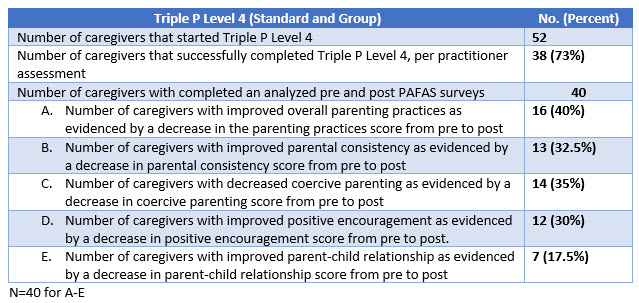
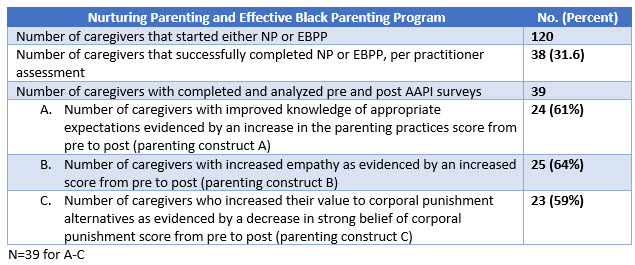
Starting in July 2018, the Prevention Board contracted with the University of Kansas Center for Research for a more efficient process for collecting data on the parent education programs. The Wisconsin Prevention Reporting System (Https://wprs.daiseysolutions.org/) is a full customizable and flexible web-based shared measurement data collection and reporting system. (DAISEY =Data Application and Intregration Solution for the Early Years). During FFY18 the Prevention Board formed a workgroup with one representative from each parent education agency to make decisions about the development of the Wisconsin Prevention Reporting System. As part of the reporting system, the Prevention Board contracted with a research consultant to identify key factors and then conceptualizing and operationalizing the identified factors so that the Prevention Board could implement the measures with their grantees. This also included understanding how the Parent Assessment of Protective Factors (PAPF) compared with the Parenting and Family Adjustment Scales and Protective Factors Survey.
Inspiring Success Stories
Six states share stories of resiliency and hope. And how participants in their CBCAP programs are overcoming challenges and building protective factors. Click the links below to see their stories.
Hawaii

Hawaii used CBCAP funds to support cohorts of the Parent Training Leadership Institute, Hawaii (PLTI). A qualitative evaluation of the Institute was conducted with former participants. The analysis revealed four overarching themes:
1) Increased civic engagement.
2) Positive intergenerational outcomes.
3) Increased advocacy skills among community members.
4) Increased opportunities for community building.
The following are examples of participants’ comments about their involvement in PLTI:
“It got me more connected with my state representative and state senator. I know who they are, I know their phone number. I know how to compose communication with them. If I need to advocate for myself or my child. I know those avenues I can take now.”
“It definitely improved my advocacy skills as well as my public speaking and addressing issues that are very concerning. It allowed me to shape into a much more effective leader, as well as instilling confidence in myself and allowing me to stand up for myself and speak up.”
“The greatest blessing, I thought is that families were eating together, all the aunties and uncles, just that family time really instilled what we’re there for…I think that everything that PLTI did strengthened the families. I love that they always had a resource table in the back where you could pick up pamphlets about a variety of different things, just any information you need about any topic.”
For more information visit, https://www.hawaii-can.org/plti.
Maryland

“If there is someone who wants to make their family’s life better…” by SK
I remembered one year ago. I was struggling every morning because I needed to find something to do with my one-year son. All the ideas that came to my mind we’re going to a shopping mall for a walk. One day, my friend gave me information about Family Discovery Center programs. I started participating in their programs. It has been one year. Me and my family’s life has changed a lot since then. I have plenty of things to do with my son although we don’t go to the shopping mall. Participation in the Family Discovery Center programs has impacted me and my family’s life in a positive way.
Family Discovery Center programs have shown me the abilities of my son from one year. My son plays at an organized daycare while I am taking an [English as a Second Language] ESL class. I can’t believe how many things my son has learned from the daycare. He learned social skills such as sharing, following rules, and communicating. He also learned education skills like counting and recognizing letters. Last week my 22-month-old son suddenly counted numbers from 1 through 10 by himself. I was surprised because I have not taught him counting and my husband as well. He learned it from the daycare. There are more abilities that my son has learned. He helps me to clean up toys after playing. He tries to make an expression, pointing and using appropriate words if he wants something. He waits when the other kid plays with the toy that he wants to play with.
Family Discovery Center programs not only teach me English but also the way to treat myself. As mentioned, I take ESL class while my son plays at the daycare. I learn computer skills, writing a resume, following instructions and reading story books in English. Learning everything in English is not easy, but the teacher makes fun activities to learn them easier.
Participation ESL class gives me an achievement. I feel I’m treating myself. Family Discovery Center programs make my family’s life organized. I have a list of family rules on my wall. One thing I learned from Family Discovery Center programs was that making family rules helps family’s life organized. The rules are simple. No cell phone during mealtime, having time to talk about my feelings, clean up toys after playing and read at least five books per day. Me and my husband are still building the list. I believe my son will join that someday too. We try to follow the rules as much as we can. We talk more and read more than before. We also clean up together which I used to do alone.
I love my family. I appreciate the Family Discovery Center that helps my family’s life better. I could not have done everything that I am doing for my family without help from Family Discovery Center programs. Based on my experiences, I would highly recommend participating in this program if there is someone who wants to make their family’s life better.”
Montana

The Statewide Network of Montana Children’s Trust Fund grantees established, with the funding from CBCAP and leveraged funds, a statewide prevention network of programs throughout Montana. Funding was directed to local, non-profit agencies and community-based organizations targeted to specific programs and populations. Each program was sensitive to the needs of the communities they served and provided programs that sought to meet those needs and provide services to parents and families. The following are highlights of parent testimonials from program staff and parents.
- Butte Community Council, Circle of Parents participant: When I first learned about Circle of Parents, I did not know if I would like it. I thought to myself, I will try it once and see how it goes. From the first day, I fell in love with this group. I felt connected. I felt like I wasn’t alone. I love my kids, but somedays life can be so hard and overwhelming that I feel so alone. I finally found a place where they understand my hard days, and I can relate to these families. I have built a bond that feels like home. When I felt like my life was full of twists and turns, ups and downs, and that I couldn’t digest anything else, Circle of Parents showed me an open hand and gave me a safe haven. I have learned so much from Circle of Parents. I have been given ample information that will help my twins down the road, and I have learned about more doctors that they can see to deal with their chronic health issues. I feel like I am a part of something so big and so amazing. We all have this amazing safe place together and we understand each other. Circle of Parents helps parents like me survive our hectic, chaotic days. This group is an outlet that can’t be replaced. Circle of Parents is a lifeline, it is home, it is family, and it is a piece of my heart. I cannot say thank you enough for how it has changed my life.
- Dawson County Health Department, Program Staff: A Parents as Teachers (PAT) client, a single mother of one boy, who has had past issues holding a job, moved here with no support and no driver’s license, received her GED, has held a job for almost 9 months and has passed her test for a learner’s driver’s license. She had to take the bus to take her son to daycare then on to the college to study and finally back home. It took her many months, but she stuck with it and ended up passing the test. She also had much turmoil at work, but we used the PAT curriculum to work through many of the issues, and she has learned to take a breath or even a day before reacting to situations. She credits PAT for helping her achieve her goals Although she gives us much credit for the support provided, I truly think her self-determination has also propelled her forward.
- Family Support Network, Program Staff: One of the families reported instituting a list of family rules and incorporating the children’s choices and opinions in making the rules, consequences, and rewards. The parents were impressed with how well their children were willing to follow the rules and how one of their children reminded dad that he was part of the family and since one of their rules was that the family sat together to eat dinner at the table, then dad had to eat with them and not sit by the television. Dad joined them at the table.
- Healthy Start Missoula, Program Staff: A few months ago, we started working with a family of seven. Five children, including two young boys on the autism spectrum, have since been attending respite care one or two times a week. The first few evenings, the children had a hard time adjusting to the new space. Gradually increasing their time spent here with and without their parents, we were able to help them successfully adjust to our staff and facility. Now, the children show up and will run up to staff to tell them about their days or show us things they learned at school or gymnastics. Their parents have told me repeatedly that they feel confident bringing their children here because our staff is trained to work with high-needs children and our facility has recently adapted to cater to the needs of children with sensory issues.
To read additional success stories, click here.
South Dakota

South Dakota maintains a network of Parenting Education Partners throughout the state. All the partners offer the same parenting curriculum: Boys Town’s Common Sense Parenting (CSP). The program is offered at a number of sites throughout the state and referral sources are diverse. The following are shared success stories.
- Common Sense Parenting, Yankton Prison: “Early on in a new class, a shy young man found the courage to share that his dad had died and his mom, who was an addict, had abandoned him at the early age of 10. He continued to live in the home and go to school because he didn’t want to go into the system. He hid his life for as long as he could. He was placed in a foster home, but he never did connect to the family. He ended up drug addicted himself. His criminal activity landed him behind bars. On the last night of class, this quiet man stood before the entire class and shared. He asked everyone if we had read Tuesdays with Morrie. He looked at the instructor and said, Miss Ann, you are my Tuesdays with Morrie. He went on to say that because of CSP, he now knows that if he has more children, he will be the kind of dad that they need.”
- Common Sense Parenting: Leaders of a CSP class shared that a couple who had struggled with drug addiction and Post Traumatic Stress Disorder came to the CSP class eager to learn better ways to cope with the stresses of parenting and help their thirteen-year-old son with some of his behavioral issues. They were open about their past difficulties, including their sharing about the previous neglect of their son. They really wanted to know how to stay calm when their son would not accept direction or show them respect. The father wished to become aware of his PTSD triggers so that his reactions to his son’s behavior would not impede teachable moments to guide their son’s behavior. When they first started class, they were uncomfortable with group practice, but in time grew more willing as they became more invested in the program. They would take their homework home and practice their new skills with their son. They reported back their son initially laughed at them as they searched for the steps in each CSP principle. He eventually told them he was proud of them for trying to take care of him and began to show more consideration by coming home on time, keeping in touch with his parents, and letting them know where he is at all times. He did struggle with his parents following through with consequences as this was new to him, but his behavior has shown marked improvements. Sometime after the couple completed the class, they shared that they continue to use CSP on a regular basis. The parents report that they were much calmer in dealing with their son and have plans in place to stay calm. They said they have learned how to stay calm in other aspects of their life as well. They felt all parents should take CSP.
- Common Sense Parenting: It was week two, a couple who has significant life struggles came in laughing and said, “this stuff really works!” The parents worked on getting the CSP reading done in the evenings. One parent was reading aloud while they were doing the dishes and other evening chores. While the mom was reading and following the father around the house, reading aloud to him, she stopped while he told their 6-year-old son it was time for his shower. He started whining and resisting as was his typical routine. In the CSP book, the mother was reading about corrective teaching and she was at the perfect paragraph to say to their son, “listen to this.” She substituted his name and read the example from the book. He looked at her, stopped resisting, and said, “I’m in your book?”. He tolerated the corrective teaching and took his shower. They used effective praise and the rest of their evening was calm.
Tennessee

The Tennessee CBCAP program is administered through the Tennessee Department of Children Services (DCS). Currently, there are 17 agencies implementing the Nurturing Parenting Program (NPP) across 12 regions. A local CBCAP funded family resource center located within a Nashville high school facilitates the NPP with pregnant and parenting teens. They shared the following story:
Darius is a student at Pearl Cohn High School. He has been in the Nurturing Parenting Program for four semesters. His first semester in NPP, he took his book home after every class to learn additional lessons. His second semester he became a leader in the group despite being the only underclassman. He came to class prepared to learn and prepared for a thoughtful and engaging discussion. He grew in his confidence as a father and started challenging the other fathers to leave a legacy and to work hard for their families. This year, Darius’s senior year, he has grown tremendously as a father and as a young man. Darius works 40 hours a week in food service, comes to school every day, and continues to see his daughter a couple of times a week. Despite his hard work and exhaustion, he continues to be a leader in our Nurturing Parenting class. Darius often asks to speak with new parents about coming to our class. He comforts them, openly tells his story, and has become a confidant for them. He asked this semester if we could add our teen mothers to the class. He wanted to reach as many teen parents as possible and felt there was a maturity in the class that we haven’t necessarily had in the past. Darius has taken a mentor role in the class. He has given our teen mothers an incredible example as to what a teen father should look like, and he has challenged them in ways that a facilitator could not do. Because of the NP curriculum, Darius has been able to grow in his self-awareness. We have seen significant growth in his emotional maturity. We have seen him use positive coping skills, advocate for his needs, fight for his education and future, and ask for help in tough situations. Recently, Darius’s one-year-old daughter was hospitalized for an illness. He handled the situation, processed what he needed, called on his support team, advocated for his family, and emotionally handled every situation he was given with grace and patience.
Utah

The following are two families’ success stories. One from a program that provides support to families that are victims of domestic violence and a Family Support Center that provides wrap-around services to all families.
Domestic Violence Program:
The CBCAP SLA in Utah collaborates with the Domestic Violence Program Administrator and the programs and services delivered by community-based organizations that provide housing and support services to victims of domestic violence and their dependent children.
A Program Director shared this story:
In January, I began working with a family of four, a mother, and 3 young children. From the beginning, I noticed that the middle child, aged 5, appeared despondent and unattached to his mother. The mother was very concerned about this as well as she had never seen this behavior from him in the past. The child also began to show violent and concerning behavior in the afterschool program, towards his mother and refused to attend school. The mother stated he used to love school. He also did not appear to find joy in many of the things that other children did. He did not want to pass out his valentines or open the valentines that were given to him. It was rare to see a smile from him.
In response, the mother and I worked closely so that I could educate her on the effects of trauma on young children. I explained the ACEs study to the mother, showed her that many of the behaviors that her son was showing were consistent with experiencing difficult life events. I also explained to the mother that leaving an abusive relationship, although difficult for the children being separated from a parent, was the best choice in the long run because she is keeping them safe. I showed the mother that with a consistent routine, therapy, and patience, her son’s behavior will improve. The mother began taking her son for counseling at The Children’s Center, communicating with his teacher, and making sure to ask for help or utilize the crisis nursery when her children’s behavior was too difficult. After a while, I noticed that in one of our meetings, the child walked up to his mother, sat on her lap, and gave her a big smile and hug. I hadn’t seen that before in any of our meetings, as normally the child would speak unkindly towards his mother. The child in every meeting forward was talkative and excited about all his experiences with this mother and in the afterschool program. One day, the mother came to my office and showed me that her son had received the Principal’s Award at school. Nearing the end of her stay, the mother and the child appeared bonded and to have a healthy relationship. The child was attending school regularly and appeared to be able to enjoy being a child again.
Family Support Center:
A participant from a CBCAP-funded Family Support Center shared this story:
I came to Cedar City 3 years ago a mess, looking for safety. I was able to get into the Canyon Creek Crisis Center while I proceeded with divorce and protective order cases. I am a single mom of four daughters. I was homeless, unemployed, and lost. At the time, I had my two babies with me, both under the age of two. My two oldest daughters were with family. I am a recovering addict and at the time was under 5 years clean. My self-esteem was beaten down. I was horrified of people, suffering high levels of anxiety and PTSD.
The Family Support Center (FSC) is my saving grace. Angels upon Earth. I do not have family in Cedar to help with my children. The FSC assisted me with my girls while I went to therapy, looked for employment, housing, and attended 12 step meetings. I now have an amazing full-time job, 8 years clean, bought my own home, and all four daughters with me full time. A mom of four girls and what we have had to overcome has been hard.
The FSC supported my family with two different parenting/family education courses, which we completed. Allowing us to reestablish bonds and find new ways of living from the harsh ways of the past. The in-home services have been a huge blessing; they work with my girls on goals in our home, so they are not always away from home after being in daycare all day. My oldest daughter was assaulted, and they gave us emotional support and allowed us time to have one on one bonding and healing time. It allowed me time to have dates with my girls. It also supported us by allowing me to be of service in 12-step recovery by taking meetings into the jail and doing step work with sponsors. The ripple effect is huge. The parent advocates I have had, and caregivers have become my dear friends. Many tears I have cried with them. Always getting the support, I needed. I did not feel good enough a mom, like I was going to cave, too overwhelmed to be doing this alone. They cheered me on. Now, even with my current new healthy relationship, we both sit with the advocate and ask questions about our children and blending 7 children. Miracles, hope, encouragement and so much more were made available. I am deeply and profoundly grateful!
